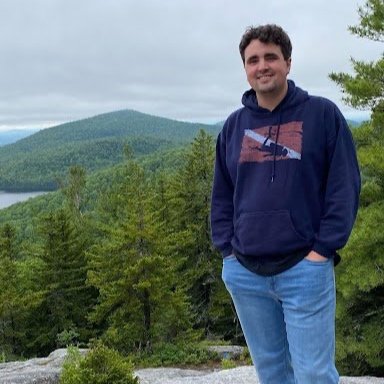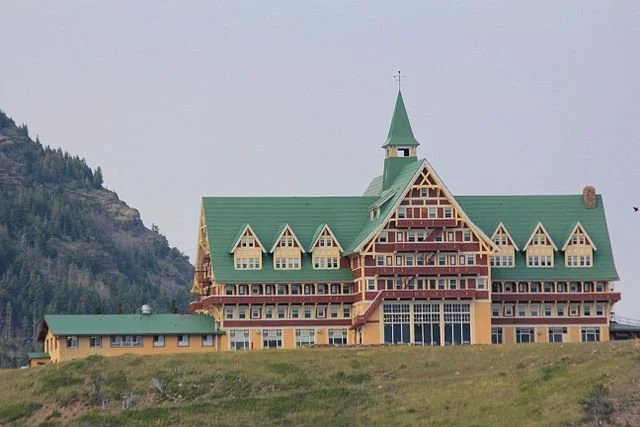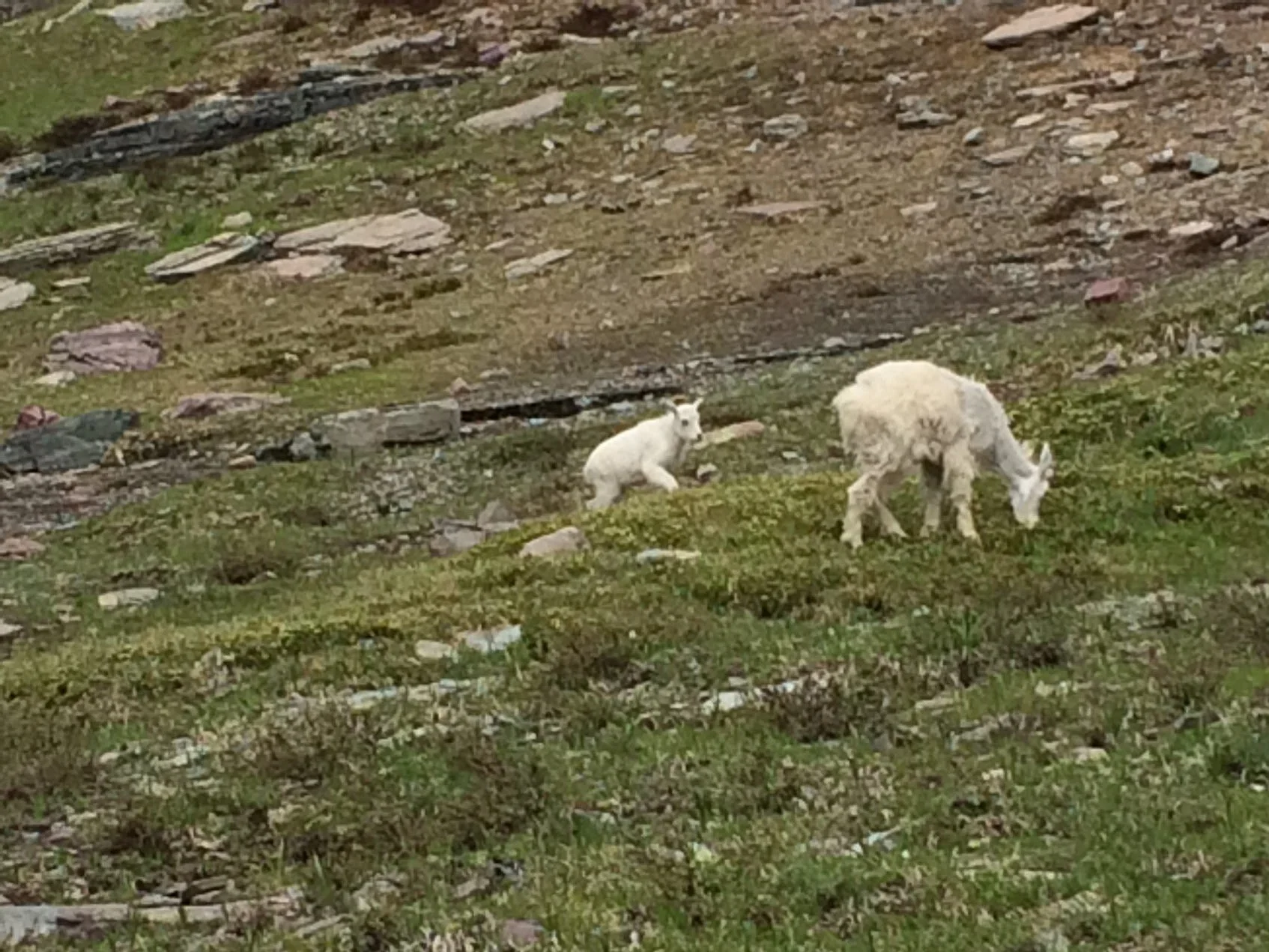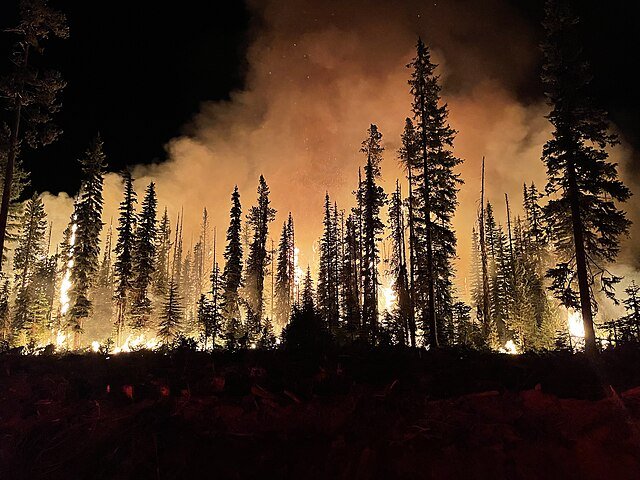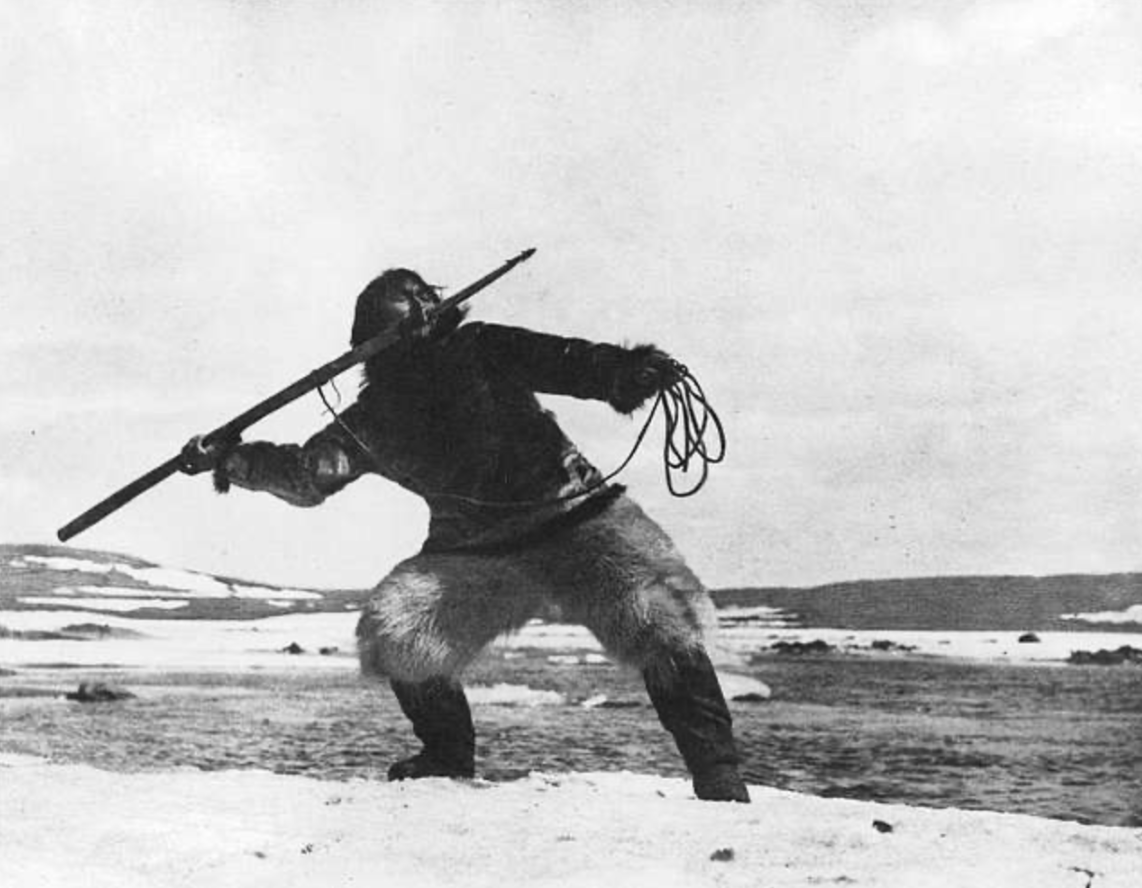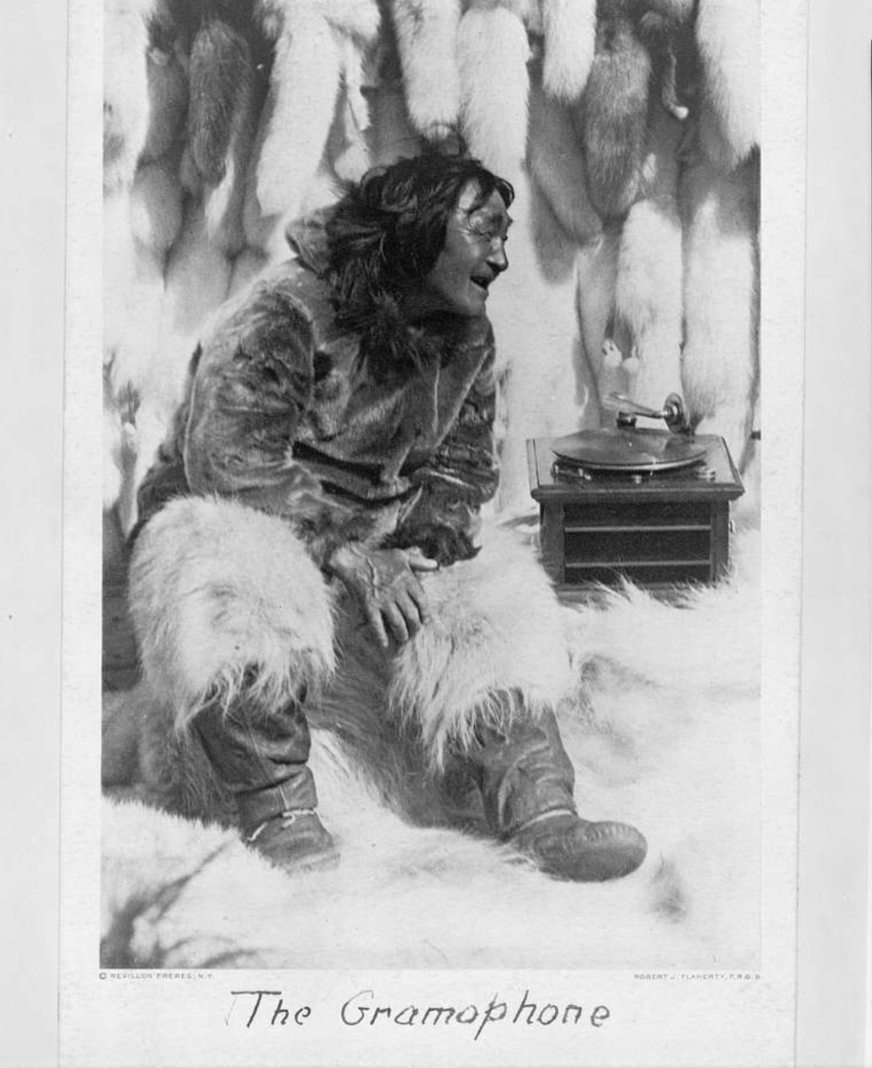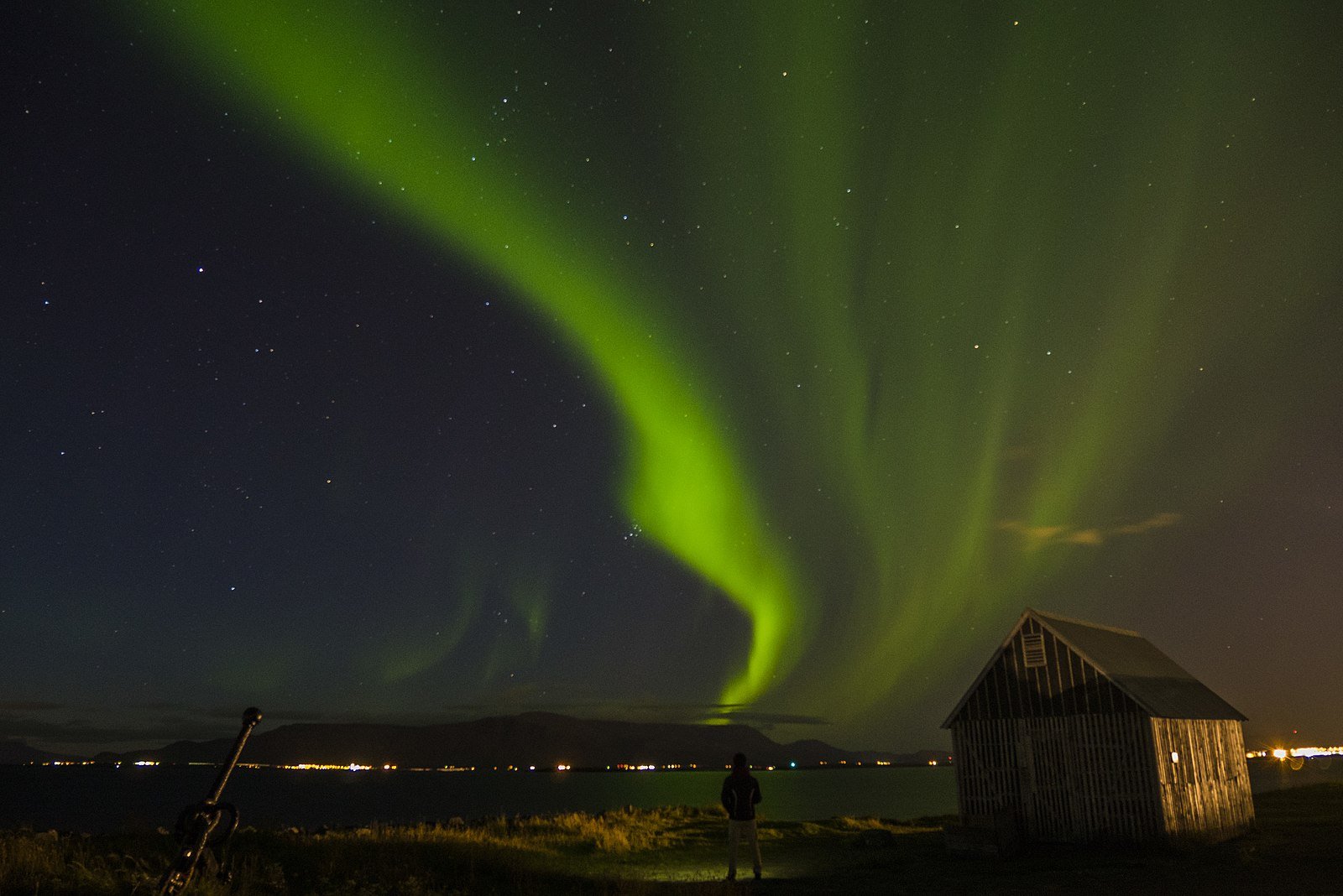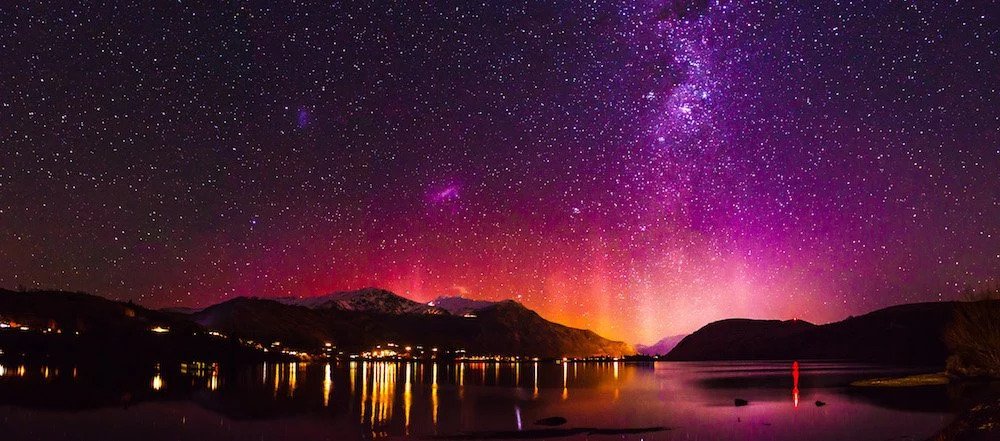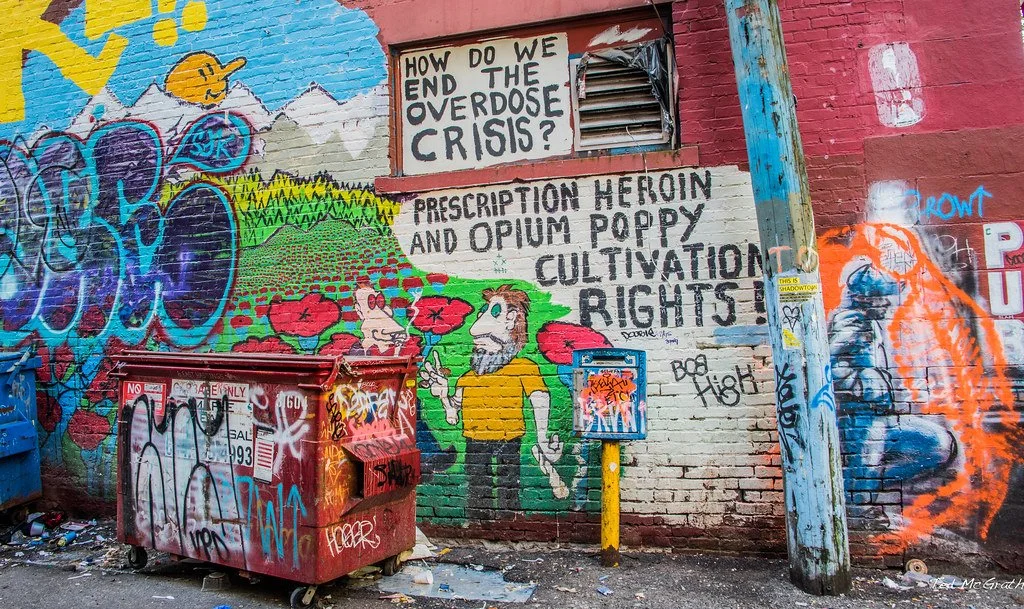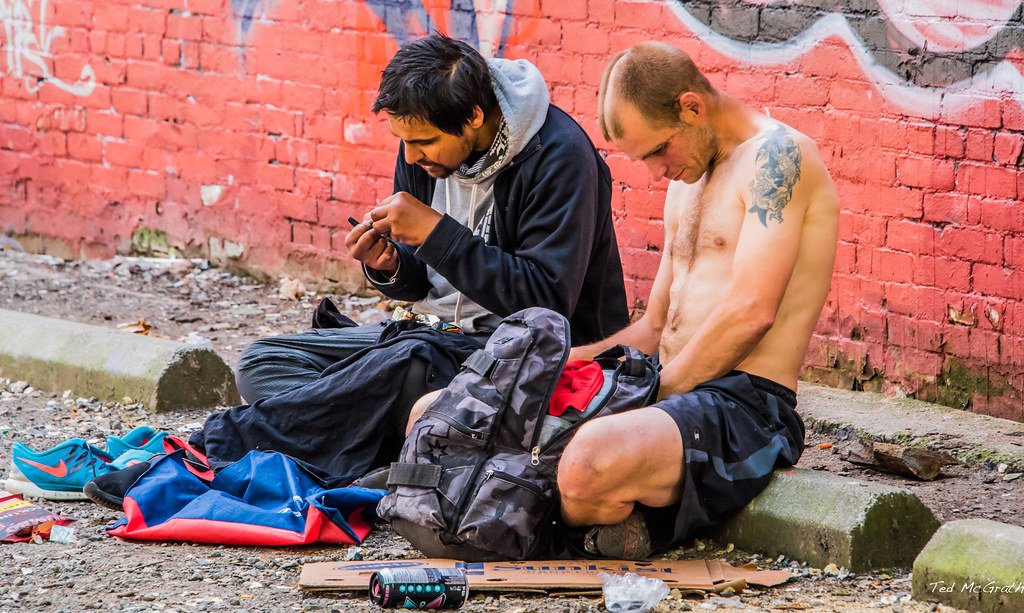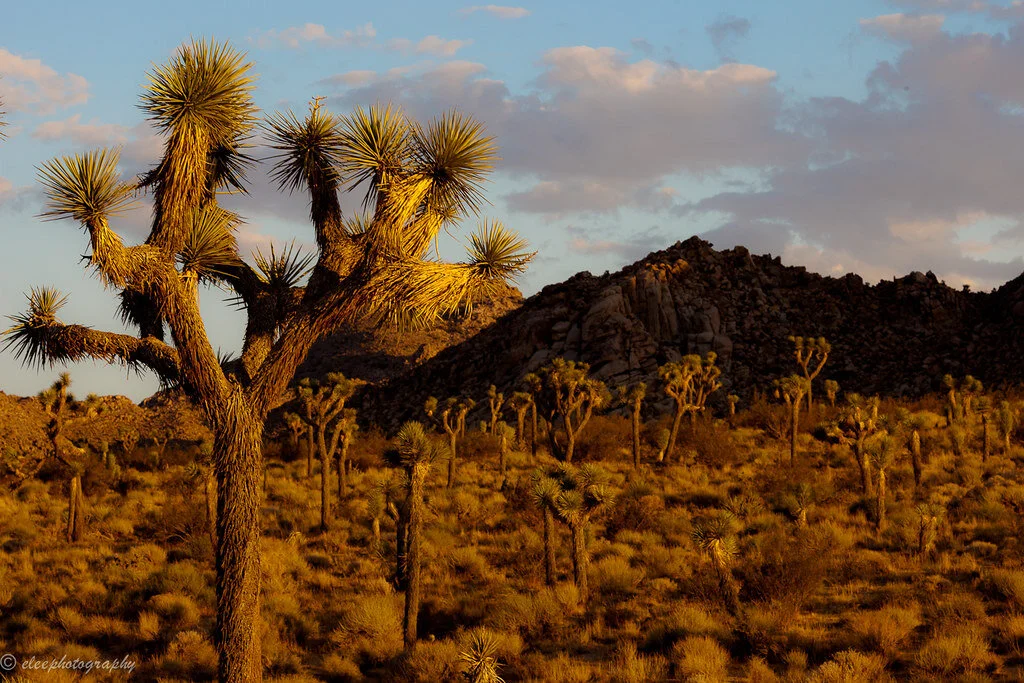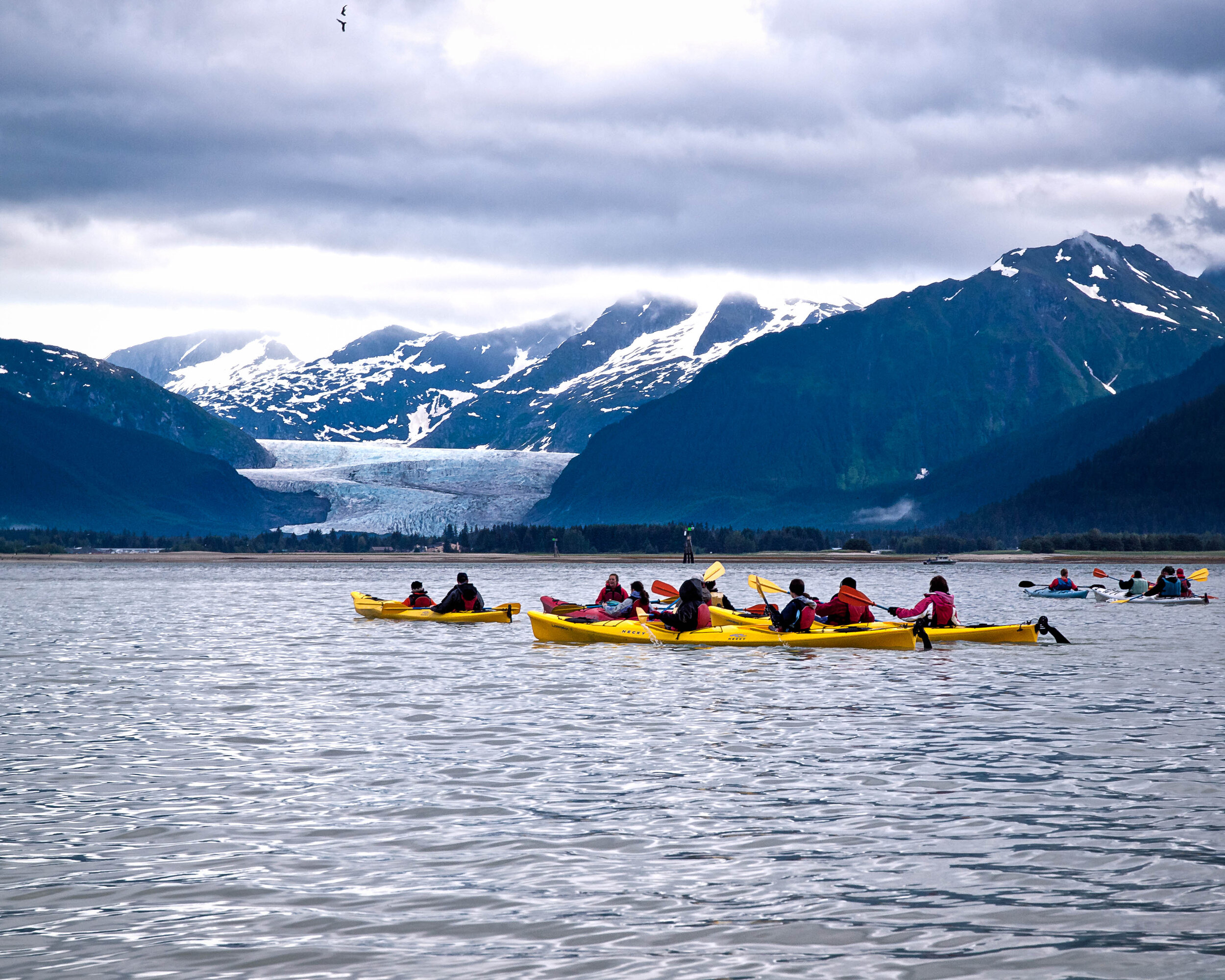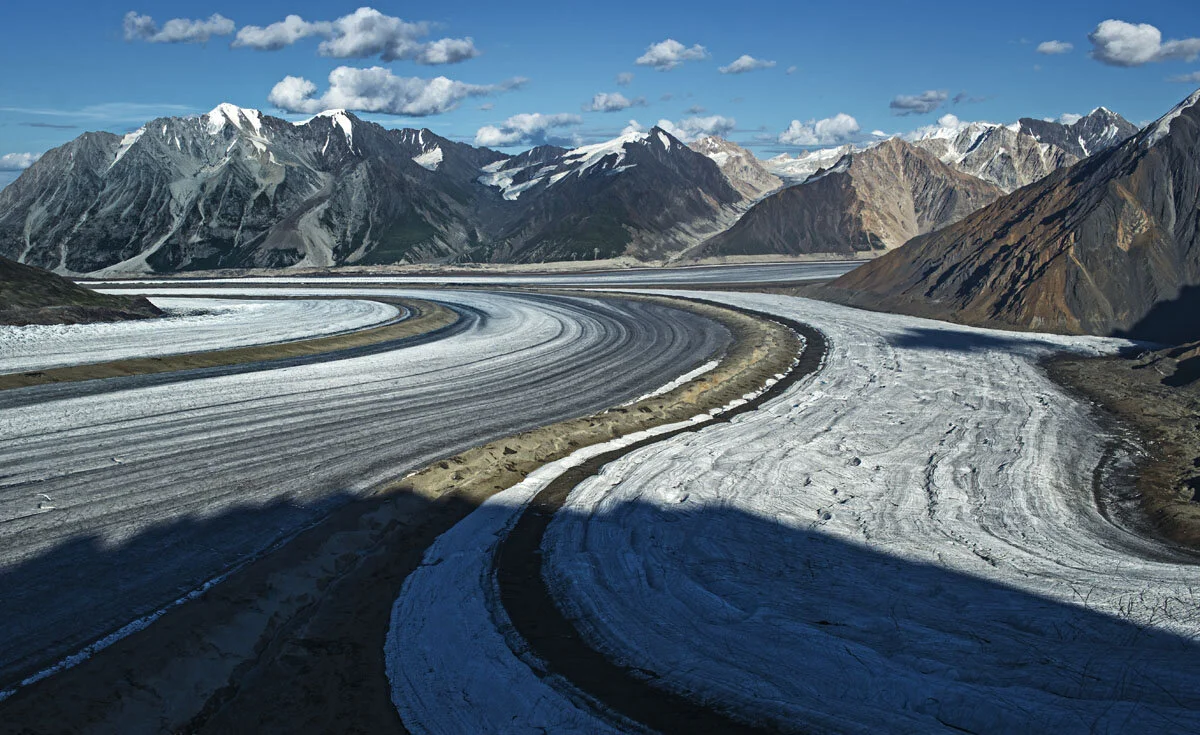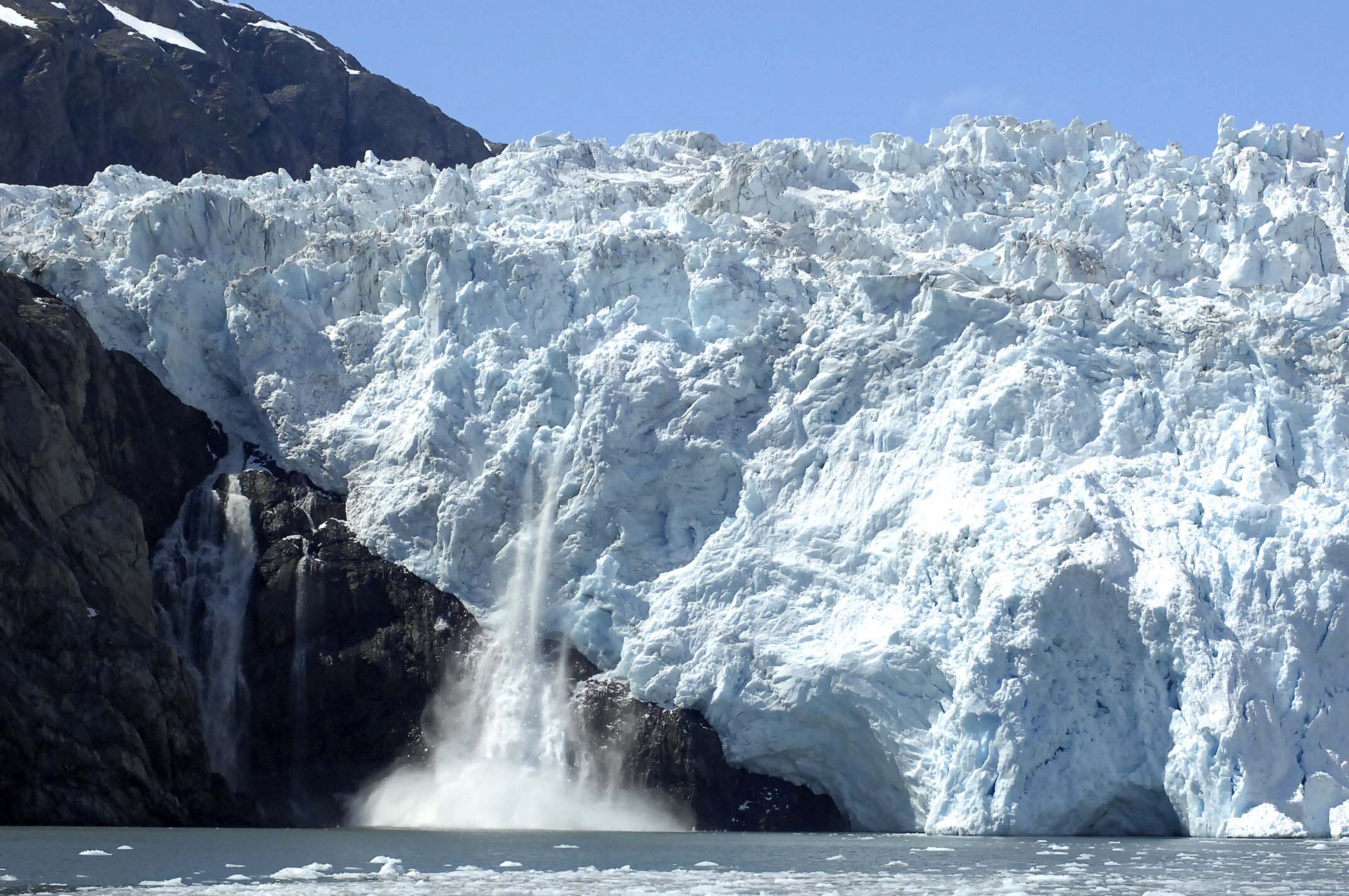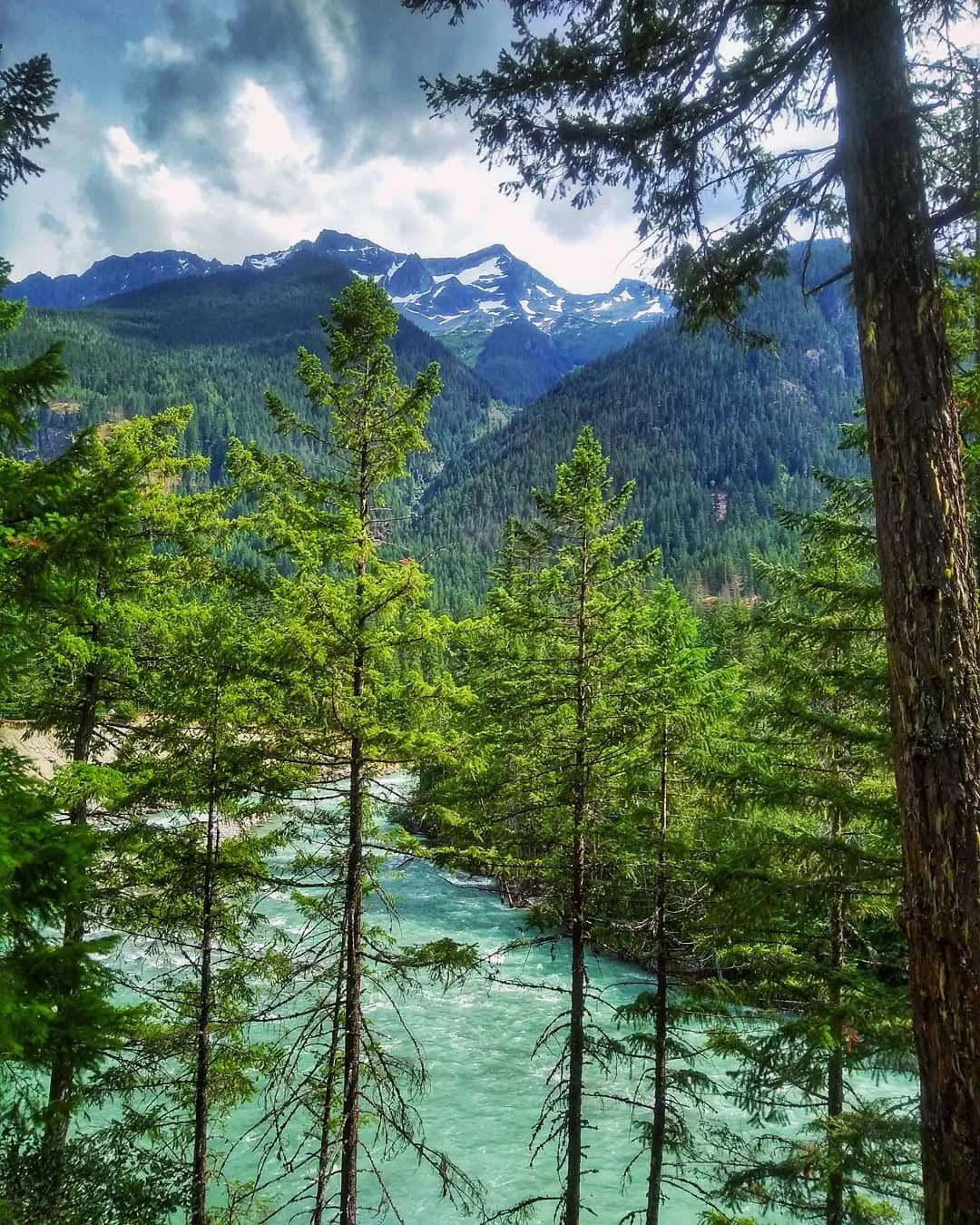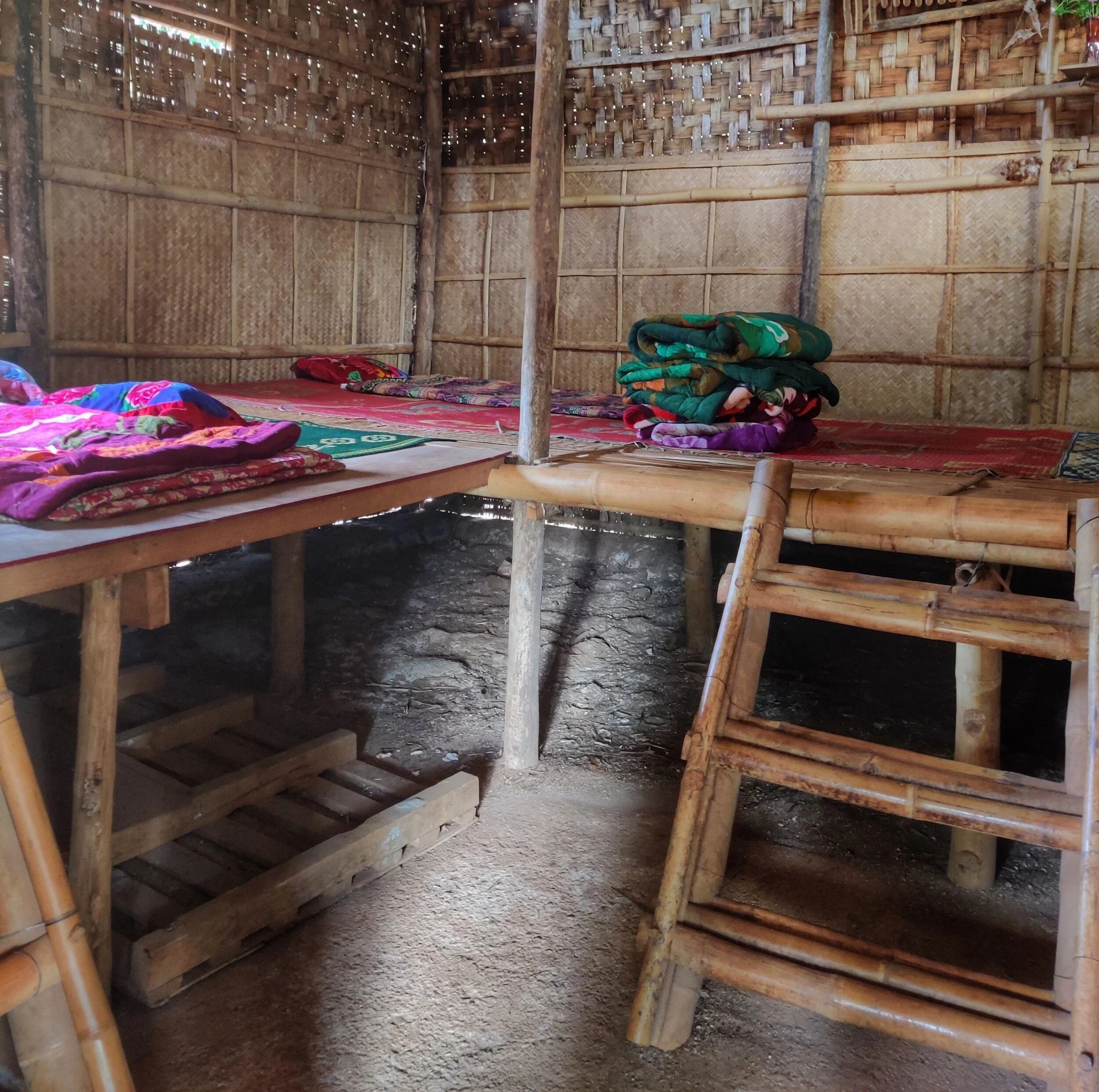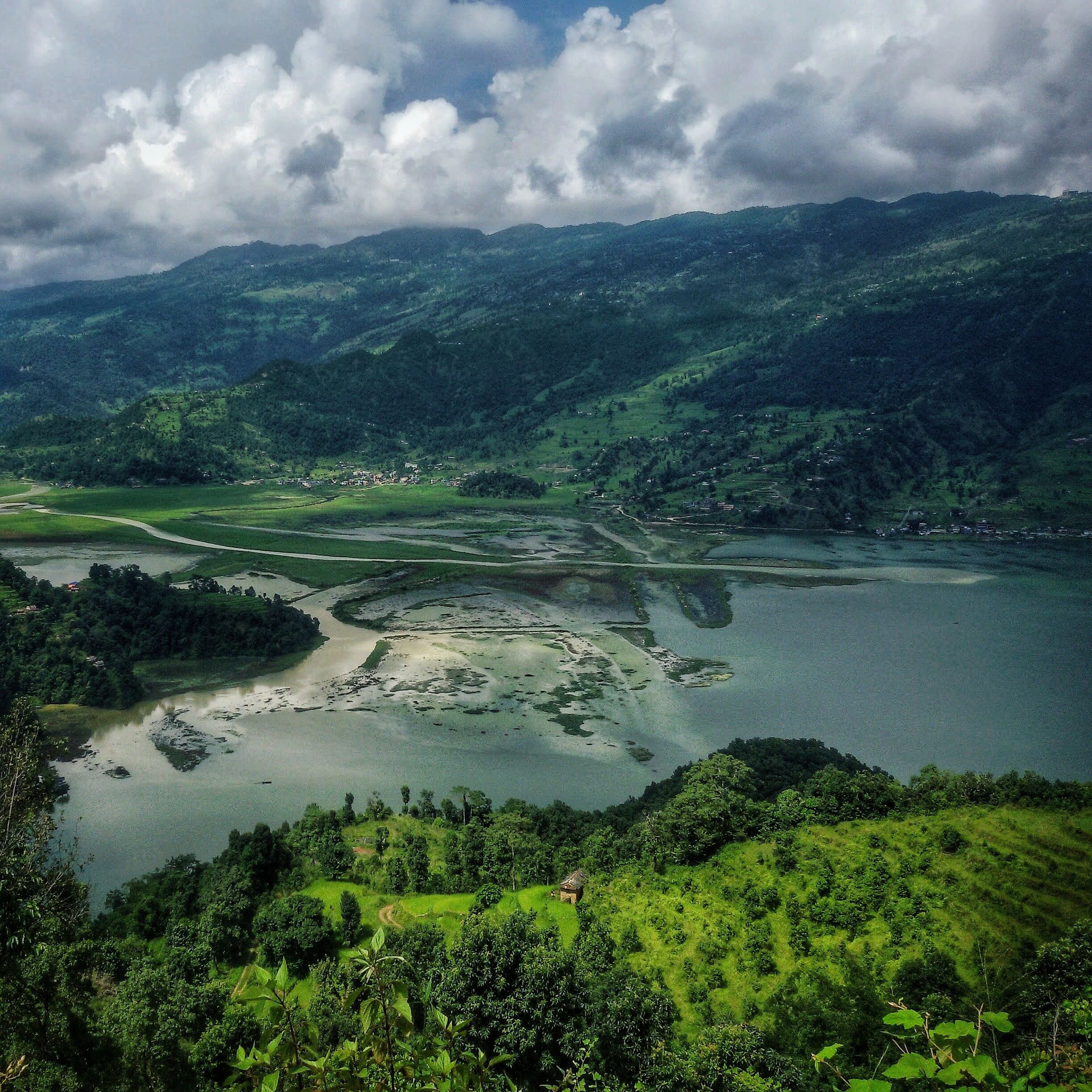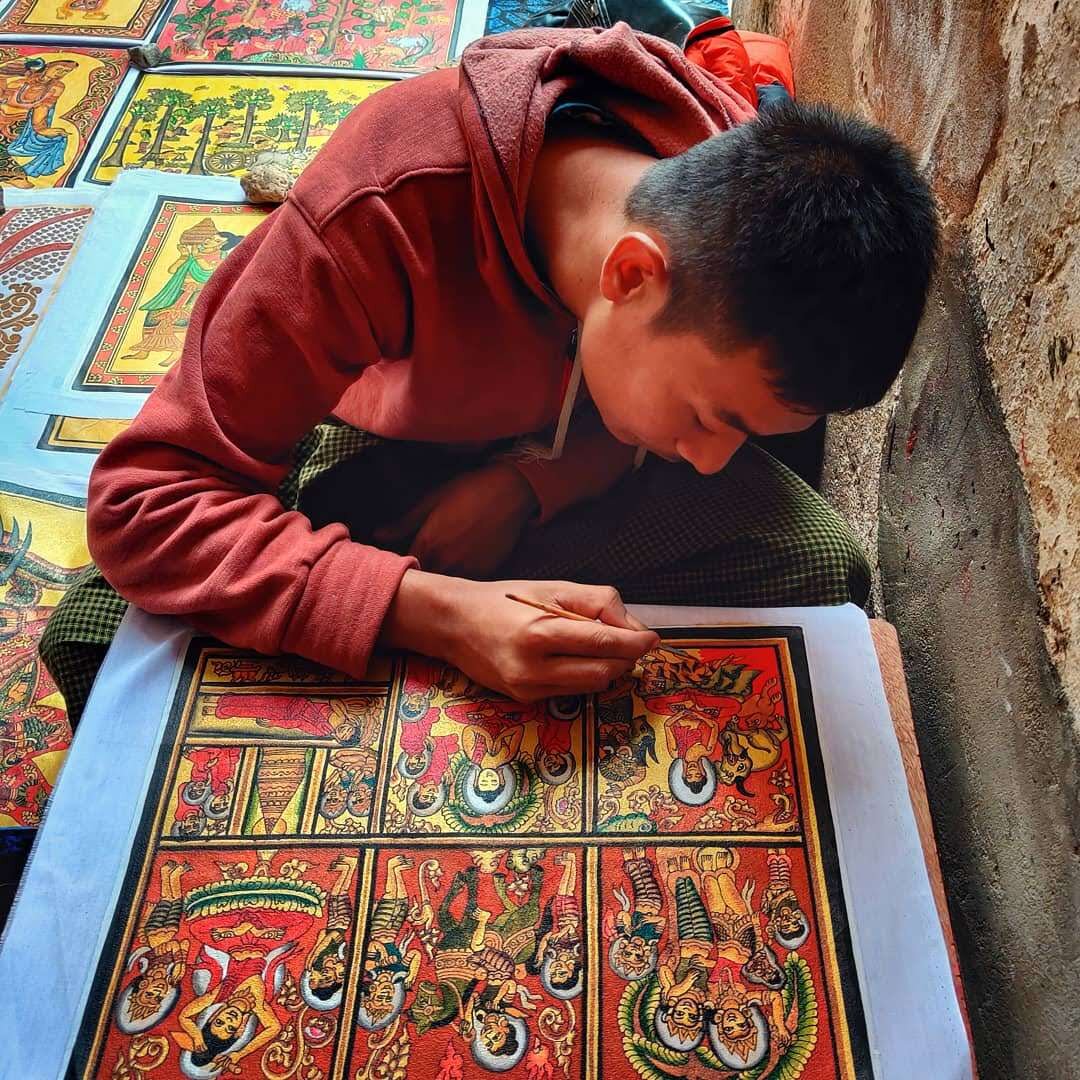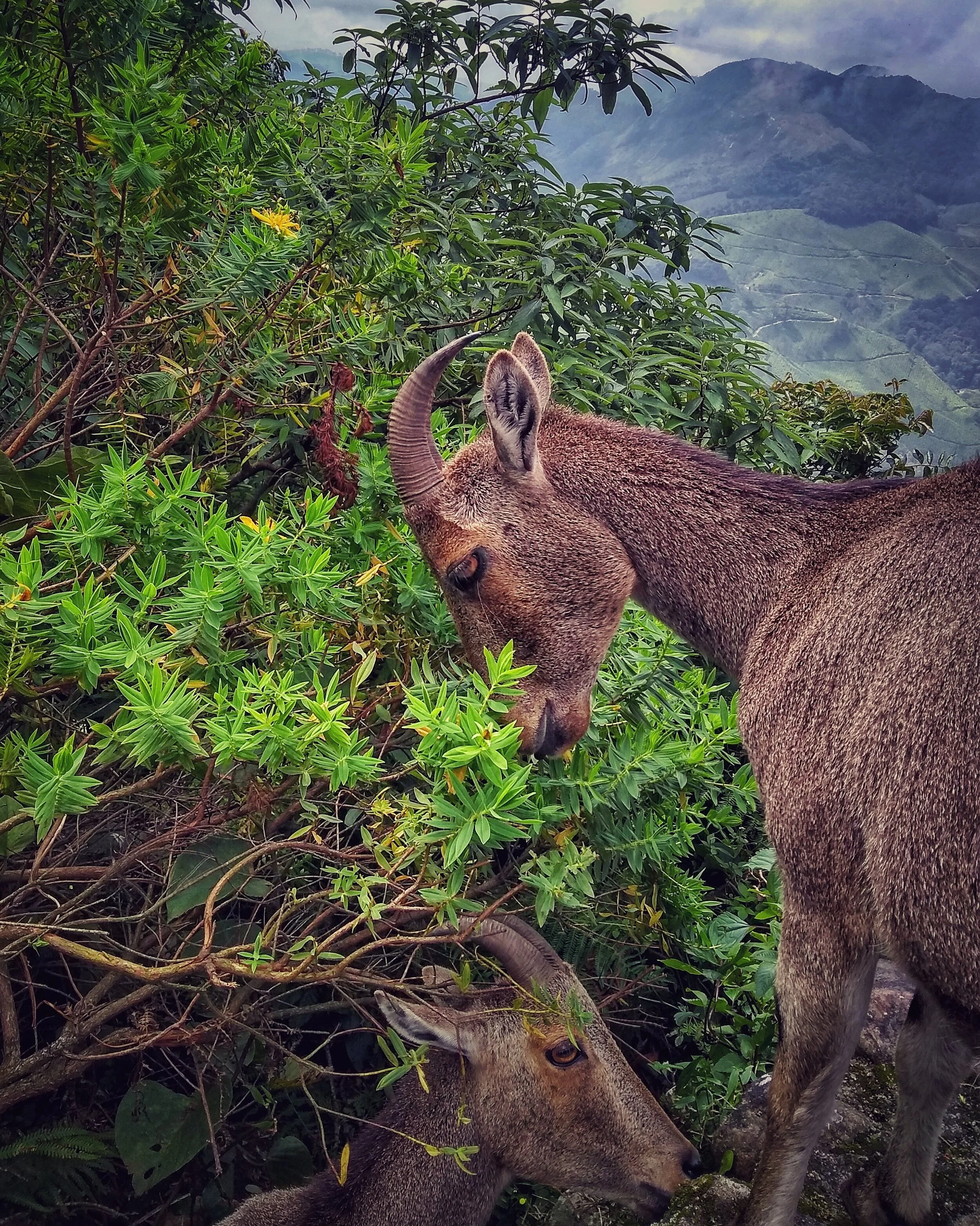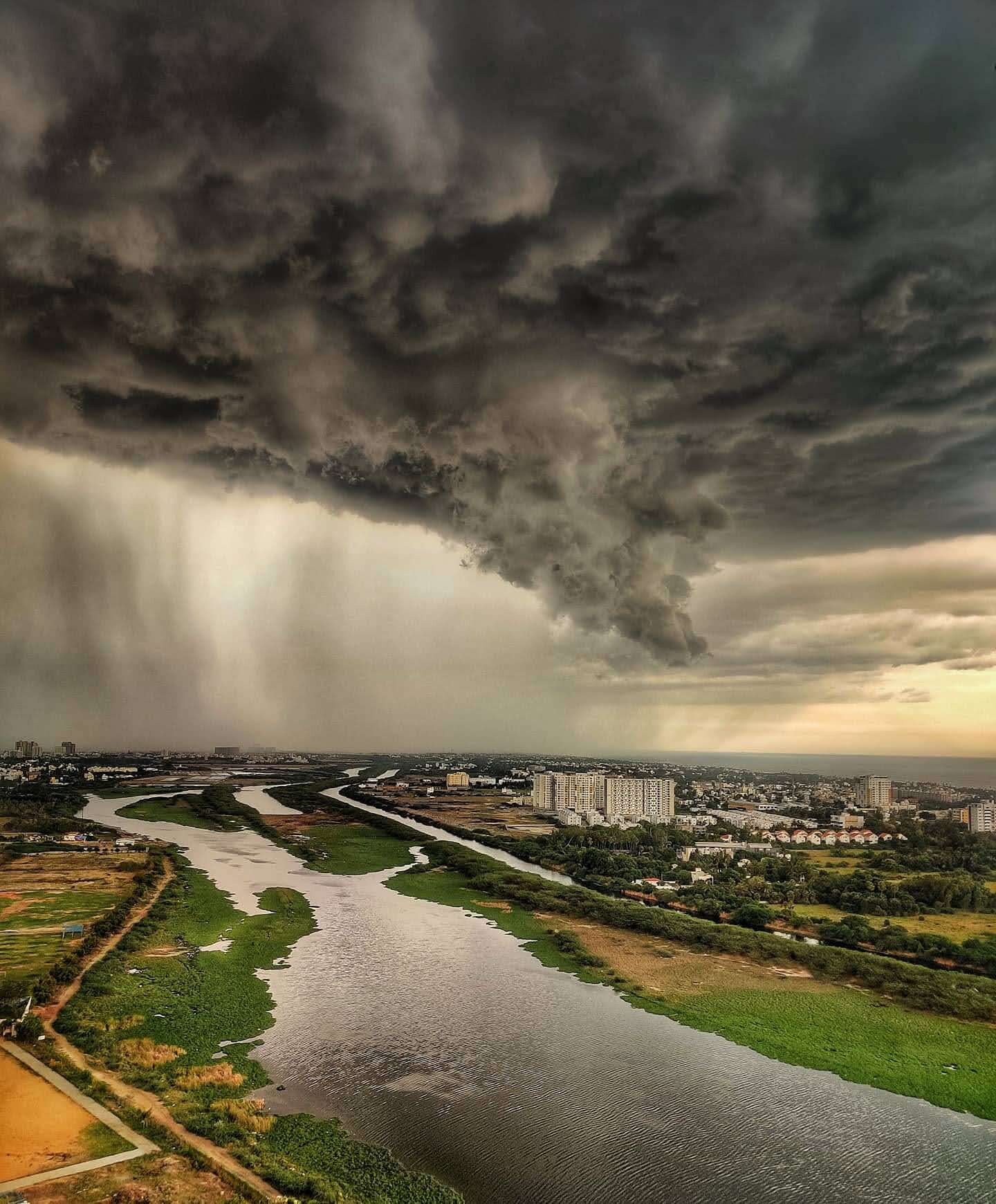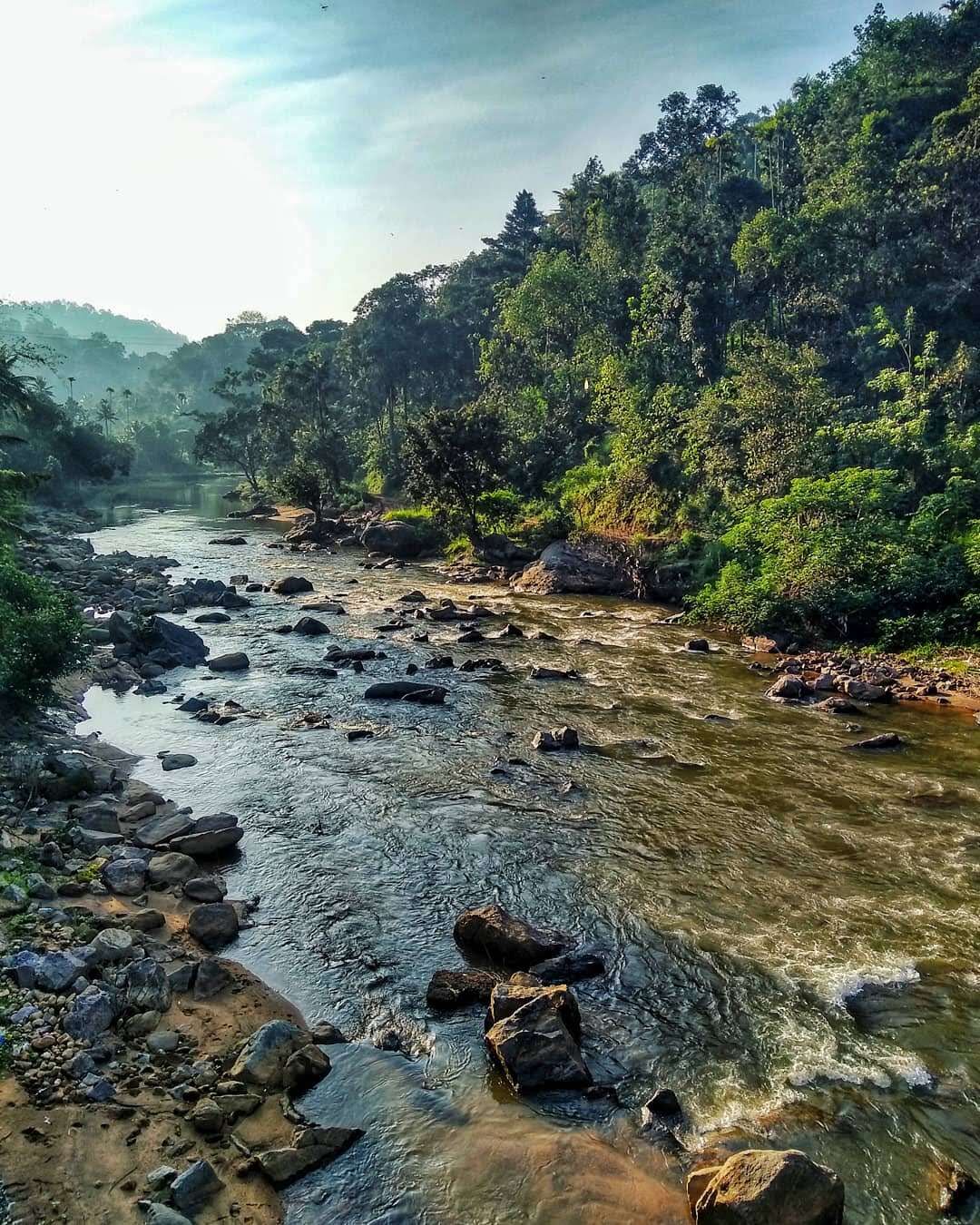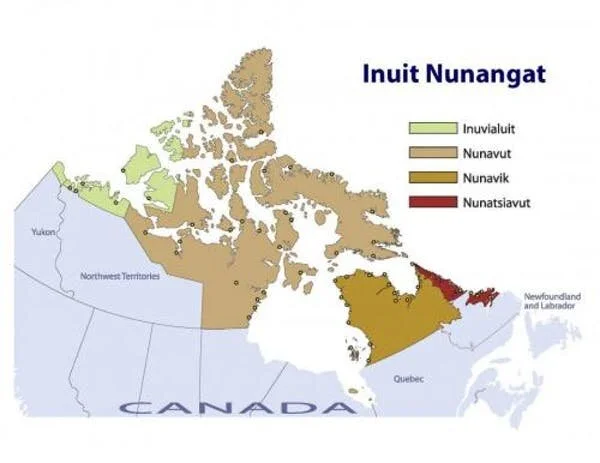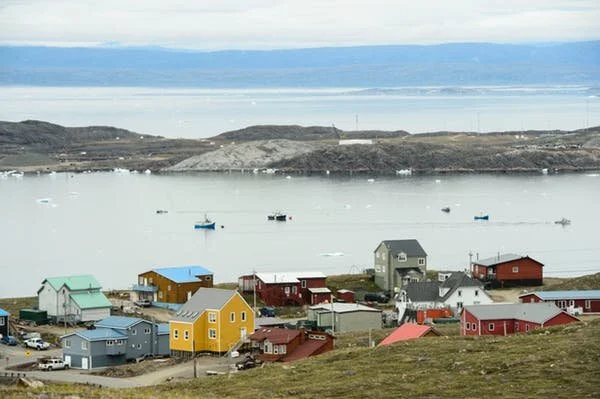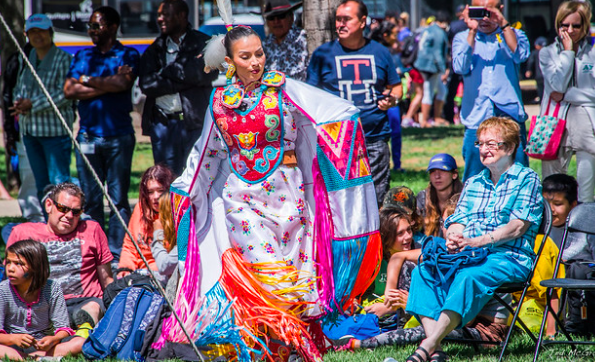Explore the timeless tradition of skating through Canada's winter wonderland, where communities bond on outdoor rinks like the world-renowned Rideau Canal, despite the challenges of climate change.
Read MoreTravel Through Time in the Canadian Rockies
Explore millions of years of natural history from ghost towns to Indigenous communities.
Morning in Banff National Park. Sergey Pesterev. CC BY-SA 4.0
Canada is home to a wide variety of beautiful landscapes, natural vistas and a rich history of human habitation. From cowboy ghost towns to Indigenous communities, people have been living in the great snowy mountains of Canada for centuries. And there’s nowhere better to experience the best of both worlds than in Canada’s iconic Rocky Mountains.
Hundreds of years ago, the Rockies were home to several First Nations tribes, including the Ojibwe, Cree and Mohawk peoples. But their history goes back even further; the oldest archaeological record of human inhabitants in these mountains dates back 13,000 years. Due to European colonization, Indigenous tribes lost their territory, but the memory of their traditions is still being carried on today thanks to companies like Painted Warriors. From horseback riding and archery lessons to natural navigation and animal tracking — the ranch provides visitors with an experience inspired by the heritage and traditions of local Indigenous communities. During the warmer months, visitors can enjoy guided or independent hikes through the mountains. In wintertime, the ranch provides snowshoe tours of the surrounding area. An excellent camping and glamping location, Painted Warriors Ranch is also dedicated to providing a historically accurate and informative experience by respecting and carrying on the traditions of the First Nations tribes.
In the heart of a 1920s ghost town rests a different piece of history — the one-of-a-kind Last Chance Saloon. Initially built as a coal mining operation, Bankhead, Alberta eventually grew into a full-fledged community. However, when the mine stopped producing, the town was left more or less abandoned. The Last Chance Saloon is particularly emblematic of the whole experience. Filled with antique mining equipment and absolutely covered in bullet holes, this classic bar now features themed hotel rooms and a functioning smokehouse.
The remains of Bankhead’s lamphouse, where miners would store their equipment. Dietmar Rabich. CC BY-SA 4.0
Human history is not the only era present in the Rocky Mountains — our ancient predecessors can also be found hiding among the rocks. Dinosaur Provincial Park, one of the best locations to find dinosaur fossils (as recognized by UNESCO), offers visitors a one-of-a-kind experience. Walking the same lands as giant reptiles did millions of years ago, visitors may find the remains of these massive creatures hidden away in the mountainside. The park hosts both family tours and slightly more challenging guided hikes (the park strongly recommends registering for these events in advance, as they frequently sell out).
The unique landscape of Dinosaur Provincial Park. XeresNelro. CC BY-SA 4.0
Human and animal history is only one part of a trip to the Canadian Rockies; sprawling Banff National Park is the real heart of these mountains. Featuring countless scenic hikes, brilliant lakes and nature preserves, this park is home to innumerable incredible experiences. From the Yamnuska Wolfdog Sanctuary (home to several packs of unique wolf-dog hybrid animals) to the legendary Cave and Basin (a beautiful thermal spring oasis), this massive national park offers a diverse range of natural splendor.
Banff National Park is dotted with scenic hiking trails of all varieties. Dietmar Rabich. CC BY-SA 4.0
Charting millions of years of history in some of the most beautiful environments on Earth, there is no shortage of fantastic experiences in the Canadian Rockies. And with plenty of sights and activities available year-round, the Rockies are the perfect destination regardless of the season.
Ryan Livingston
Ryan is a senior at The College of New Jersey, majoring in English and minoring in marketing. Since a young age, Ryan has been passionate about human rights and environmental action and uses his writing to educate wherever he can. He hopes to pursue a career in professional writing and spread his message even further.
Hiking in the Canadian Rockies: The Natural Magic of Waterton National Park
Find some of the best hikes in the world on the southern Canadian border.
Waterton Lakes seen from the Prince of Wales. Sean Tseng, CC BY-SA 4.0
Uniquely positioned as the only national park in both the United States and Canada at the same time and known as an International Peace Park, and the first of its kind, Waterton is a once-in-a-lifetime experience. During my two weeks there, I discovered hidden waterfalls, hiked over miles of snow and ice, and took a step back into Canadian history.
Our first destination was the Prince of Wales Hotel. Positioned on top of a hill overlooking the beautiful Upper Waterton Lake, this building was constructed in 1927 and has remained one of the most recognizable landmarks in the entire park. The interior is a classic 20th-century hotel, complete with a manually-operated crank elevator. Niagara, the restaurant within the hotel, holds high tea in the drawing room in the afternoons, bringing guests back to Victorian England, complete with pastries and ornate British tea sets.
The Prince of Wales Hotel. Royalbroil, CC BY-SA 3.0
Heading down along the steep path on the hillside, we arrived in the small town of Waterton on the edge of the lake. The sleepy mountain village was a lovely experience; it felt like taking a trip back through Canadian history, complete with uniformed mounties patrolling the streets. The town opens up onto a variety of hiking trails into the surrounding mountains and along the shores of the lake.
Taking one of these mountain paths, we climbed up and around the foothills and into a gorgeous pine forest. Making our way along the rocky outcroppings and winding paths, we found ourselves facing a thundering waterfall only a few minutes after we started out. This would prove to be the standard for our trip; it seems like everywhere you look, there’s another beautiful vista or secret wonder waiting to be discovered.
Just a few minutes’ drive from the hotel, we arrived in Red Rock Canyon, a small but beautiful gap in the earth lined by small brush and occasionally frequented by coyotes. Thankfully, we didn’t run into any of them on our trail, but at the viewing spot at the end of the short hike we spotted one scampering along the bank of the small river far below us. This canyon is also a known visiting spot for both brown and grizzly bears; their presence in the park has led seasoned travelers to suggest carrying noisemakers or regularly shouting, “Hey, bear!” to avoid taking the huge animals by surprise and risking an attack.
After a few days enjoying the sights of Waterton, we made our way further west and crossed the border back into the US’s Glacier National Park to visit some of the last remaining glaciers in North America. One of these ancient ice giants, Jackson Glacier, is visible from the side of the famous Going-to-the-Sun Road. This winding path along the side of the Rocky Mountains sits at an elevation of around 6,000 feet and is lined with waterfalls and scenic vistas. If you’re lucky, you can spot herds of bighorn sheep climbing the hills alongside the road; with their unique hooves, they can cling to a sheer rock wall as if it was flat ground. And as long as the weather is good, you can clearly see the massive ice sheet that carved out the valleys below, suspended between two peaks in the far distance.
Jackson Glacier as seen from Going-to-the-Sun Road. MONGO, CC BY-SA 4.0
Further along the road, we came to our next stop; a trailhead that led out into a massive field of snow. With bandanas and wool hats to resist the biting cold, we started out across what looked like a scene straight out of a Hallmark movie. But after a few feet, we discovered that there was actually a wooden walkway—about three yards beneath us. This massive field of snow was in reality a mountain of its own; it was several yards deep and miles wide in all directions.
After picking our way along the often slippery surface of the snowy mountain, we found ourselves in another forest, this one populated by tons of wild mountain goats. Groups of hikers stood along the roped-off path, snapping photos of the adorable baby goats as they rooted through the snow and brush for food. We also spotted some wolverines, keeping their distance from us as they hunted for prey along the upper slopes of the mountain.
A mountain goat with its kid. Photo by author.
Once we had descended to our car again, we made our way back north to our last stop: Many Glacier Hotel, overlooking Swiftcurrent Lake. After dropping off our things, we hopped on board one of the boating tours. We were taken across the lake to the opposite shore, where we briefly hiked our way through the foothills before hopping on another boat and circling back around. During our cruise, we were given the history of the area, from the area’s original residents, the Cheyenne and Blackfoot tribes, to the park’s founding in 1910.
Waterton and Glacier are some of the most beautiful national parks in the world; despite being overshadowed by Yellowstone and the Grand Canyon, there is nothing quite like hiking across miles of snow and viewing the ancient glaciers that formed the landscape of America and Canada. The wildlife, the environment and even the towns of Waterton are steeped in natural beauty and wonder; anyone who enjoys hiking and loves a good view should make their way to Waterton once in their lives.
There are many ways to visit and stay in Waterton. The closest airport to the park is Kalispell (FCA), although for some Calgary International Airport (YYC) may be preferable. The Prince of Wales Hotel from this article is open for online bookings in the spring and summer at their website, and other lodgings are bookable here and on other sites you can find through Google Hotels. Prices in the area generally range from around $130 to $150 per night.
Ryan Livingston
Ryan is a senior at The College of New Jersey, majoring in English and minoring in marketing. Since a young age, Ryan has been passionate about human rights and environmental action and uses his writing to educate wherever he can. He hopes to pursue a career in professional writing and spread his message even further.
Uncontrolled Burn: Canada’s Devastating Wildfires
Thousands of wildfires, miles of scorched forests and colossal plumes of smoke are threatening Canada on all fronts.
Forest fire at night. U.S. Forest Service, public domain
Canada is no stranger to wildfires. According to the Canadian National Fire Database, over 8,000 fires occur every year, burning over 2 million hectares of land. The highest risk period for fires starts in April or May and lasts all the way through September or October, with hold-over fires potentially burning well into winter.
But recently, fires have become more and more frequent earlier in the year. These early fires have also been growing in severity and damage, which should only happen well into the summer. Canada has endured over a thousand fires in 2024 alone, with 104 currently raging as of late May. Most are relatively under control thanks to quick responses from fire teams, but about a seventh are registered as “uncontrolled.” Despite the best efforts of local fire companies and government action, these fires have devoured thousands of hectares of land and are currently threatening several cities across the country.
The Parker Lake fire, named for its apparent origin point, caused thousands of citizens of Fort Nelson in British Columbia to flee their homes. At that time the fire was already roughly 3 square miles in size; the long period of dry weather, coupled with strong winds, caused the fire to grow out of control, which prompted evacuation orders on May 11th. Parts of Alberta have also been given orders to prepare for evacuation as other fires steadily approach.
In addition to the threat posed by the blazes themselves, the smoke produced by the constant burning has blanketed most of Canada and is beginning to drift south into the midwestern United States. This smoke can cause serious reactions in those with existing respiratory illnesses and even be harmful to the lungs of healthy individuals. Given the severity of 2023’s wildfire season, we can expect a tremendous amount of smoke this year as well.
There are many possible causes for wildfires, ranging from the carelessness of individual hikers or campers to the climate itself. Higher global temperatures can cause more frequent flare-ups, long-lasting droughts can leave forest floors incredibly dry and flammable, and warmer winters leave less snow behind, resulting in even dryer conditions. Additionally, zombie fires—blazes that have smoldered underneath the snow over winter only to reemerge after the spring thaw—have increased the number of threatened communities.
How You Can Help
Fire season has only just begun in Canada and the nation is already being battered from all sides. Conditions are only expected to worsen as the temperatures rise and droughts linger; more evacuations are also expected as a result. However, several charities have already begun donating to the firefighters working to combat the blazes, as well as the many displaced citizens. Sites such as Global Giving and the Canadian Red Cross are excellent ways to help offset the devastation wreaked by the hundreds of wildfires.
Ryan Livingtston
Ryan is a senior at The College of New Jersey, majoring in English and minoring in marketing. Since a young age, Ryan has been passionate about human rights and environmental action and uses his writing to educate wherever he can. He hopes to pursue a career in professional writing and spread his message even further.
The First Documentary? Or an Utter Falsehood?: "Nanook of the North"
Cemented as a piece of cultural iconography of the Inuit Peoples, "Nanook of the North" exemplifies how art and exploitation can coexist.
“Nanook” Harpoon Scene, Musee McCord Stewart, CC0.
A series of onscreen intertitles dash and dance across the screen at the start of director Robert Flaherty’s 1922 documentary "Nanook of the North." Viewers are told of the harsh cold in Eastern Canada's Ungava Peninsula and, more specifically, the difficult process of filming under these conditions. Soon, a man with a fur coat and weathered skin occupies the screen, making direct eye contact with the camera as wind ruffles the fur of his coat. His name is Nanook—or so we are told.
"Nanook of the North" is one of the most cited and celebrated films in history; it is a staple in movie buffs’ collections and academic classrooms alike. And, the film was one of the first twenty-five films to be chosen for the Library of Congress’s national film registry. The film centers on a man named Nanook and his family as they hunt and live in the freezing temperatures of Eastern Canada through both summer and winter. Critics and historians alike have deemed Nanook the “original” documentary film for its then-groundbreaking ethnographic preservation and depiction of Inuit life and culture. Perhaps just as importantly, Flaherty himself has gone down in history as a legendary dramatist and pioneer of the documentary genre.
"Nanook of the North" original promotional poster. Wikimedia Commons. CC0.
Years later, however, the film is now shrouded in mystery, infamy and controversy. Although "Nanook" is groundbreaking, it is also misunderstood by many. Careful watchers will spy an explanation in one of the first intertitles that Nanook was a composite character created by Flaherty to typify his perception of Inuit life. For much of the twentieth century, people considered the portrayal to be both real and accurate. But, as the film itself makes clear, Nanook and his entire on-screen family were characters. The character of Nanook is played by a man named Allakariallak, and his “wife” Nyla is actually a woman named Alice. The suspenseful harpoon hunting scenes and costuming of the characters is both dated and staged.
Despite being well-received upon its release and celebrated continuously since, "Nanook of the North" is both fabricated and anachronistic. Some modern theorists question if the film should even be considered a documentary at all. But, at the same time, documentary film is not solely the reflection of reality and preservation of truth; many documentaries today are simply a depiction of the filmmaker’s worldview and are similarly underlined by personal bias. And, consequently, Nanook is a reflection of Flaherty's bias and life experiences. Flaherty’s father was a mining engineer and geologist, and his mother encouraged Flaherty’s flair for the arts. Moreover, while growing up in Iron Mountain, Michigan near the border of Canada, Flaherty interacted with American traders and trappers as well as Indigenous peoples who also lived near or on the United States-Canada border. His childhood perception of these peoples frame the plot and characterization of Nanook’s family as well as the traders they meet, which were inaccurate by the time of the film’s 1922 release. Flaherty frames himself as an explorer and discoverer when, in reality, by 1922 many Inuit people already used rifles and incorporated western clothing into their outfits. In short, Flaherty’s depiction of Nanook and his family is a romanticized depiction of Inuit culture and life.
Robert J. Flaherty. Arnold Genthe. CC0.
But, in a pre-internet age, the audience had no idea that these images were manipulated and romanticized — they had no way of doing their own research because there were few if any realistic depictions of Inuit life in readily available media. What resulted was “Nanookmania,” a craze among viewers that resulted in the appropriation of Inuit culture. And, although one could make the argument that Flaherty had no idea that this popularity would ensue, he took steps to market the film to profit from the inaccurate portrayal of these people. The fur company Revillon Freres sponsored Flaherty’s film, which featured Nanook and his family in outdated fur coats, as well as a large display of fur pelts at trading post scenes. In many ways, this inaccuracy was an early form of product placement.
“Nyla,” pictured in a fur. Musee McCord Stewart. CC0.
Beyond the marketing and fictional construction of characters in "Nanook of the North", many of the directorial choices both romanticize and exotify the Inuit actors featured in the film. The intertitle cards declare that Nanook and his family are “kindly, brave, and simple,” perpetuating the stereotype that Inuit people are an unintelligent yet loveable people and thereby infantilizing them.
Moreover, in a scene at the trading post, when one of Nanook’s children eats too much biscuit with lard, a white trader feeds the child castor oil and, miraculously, the child is better instantaneously. This scene exalts western medicine and, in turn, harmfully glorifies western ideals and technology. Additionally, while at the trading post Nanook, a grown man, plays with a record player, biting the vinyl and laughing. This scene not only makes a joke out of Nanook’s supposed unfamiliarity with that piece of technology, but also infantilizes him in the same vein as the stereotypical descriptions of the family at the beginning of the film.
The infamous Gramophone scene. Library of Congress. CC0.
Although "Nanook of the North"will forever be considered one of the first documentaries and a dramatic feat by director Robert Flaherty, it is important to note the inaccuracies and misappropriation that riddles the film. Primarily, the movie is a representation of Flaherty’s limited interactions with Inuit peoples, informed by his childhood memories. As "Nanook" lives on in infamy, it is crucial to acknowledge the drawbacks — intentional and not — in Flaherty’s directorial approach.
Carina Cole is a media studies student with a concentration in creative writing at Vassar College. She is an avid journalist and occasional flash fiction writer. Her passion for writing overlaps with environmentalism, feminism, social justice, and a desire to travel beyond the United States. When she’s not writing, you can find her meticulously curating playlists or picking up a paintbrush.
Chasing Aurora: Where To See The Northern Lights
From Norway to New Zealand, these five spots are perfect for experiencing the elusive beauty of the Aurora Borealis.
The Northern Lights as seen from the southern coast of Iceland. Cameron Pickett. CC BY 2.0.
The Aurora Borealis, better known as the Northern Lights, is one of the most magical natural phenomena to witness in person. It is caused by electrical interactions in the upper atmosphere that release waves of normally green and yellow light depending on which elements have reacted. Environmental conditions need to be perfect in order to properly experience the true beauty of the elusive lights, but there are a few locations near the Arctic Circle from which they are easier to spot. Here are five locations with an exceptionally good view for those who are trying to catch a glimpse of the lights, adjusted for the current astronomical layout of the planets and stars.
1. Rovaniemi, Finland
The Northern Lights shining down on the Santa Claus Village in Rovaniemi, Finland. Santa Claus Village. CC BY-NC-ND 2.0.
The city of Rovaniemi is the capital of Lapland, and is also well publicized as being the hometown of Santa Claus. Situated right on the Arctic Circle, it is most easily reachable by plane from Helsinki, though it is also accessible by local trains and buses. Rovaniemi is famous for its natural beauty -- its northern latitude makes it perfect for those wanting to experience the ‘midnight sun’ phenomenon, where our star is visible for a whole 24 hours. The city is the perfect destination for travelers looking to enjoy the Northern Lights, with the optimum viewing times occurring between August and April.
2. Yukon, Canada
The Northern Lights over Kluane Lake, Yukon. Keith Williams. CC BY-NC 2.0.
Located in the north east corner of Canada, the Yukon territory is home to almost 22,000 square kilometers (around 8,500 square miles) of protected land as part of the Kluane National Park and Reserve. Visitors can reach the park by plane, boat or car to visit the country’s largest ice field, an incredible grizzly bear population, and even Mount Logan, Canada’s highest peak, which stands just under 6,000 meters (around 19,685 feet) tall. While the Northern Lights can be seen from most of Canada’s provinces, the display is visible to those in the Yukon from August to April, making it one of the longest viewing seasons in the country.
3. Reykjavík, Iceland
The Northern Lights seen from a small cabin just outside of Reykjavík, Iceland. Davide Cantelli. CC0.
The Icelandic capital of Reykjavík is by far the largest city in the country and is also one of the best places to watch the Northern Lights. Just a few degrees south of the Arctic Circle, many residents of the city claim to see the display from their windows on especially bright nights. Visitors can fly directly into the city’s airport and enjoy various other outdoor activities including icy glacier hikes, swimming in natural hot springs during the day and venturing to Thingvellir National Park, which is just a short drive from the city to see the aurora. Though brighter auroras can be seen from the city, avoiding light pollution makes it much easier to experience the full display between September and April.
4. Tromsø, Norway
The Northern Lights shining over the mountains in Tromsø, Norway. Maria Wulff Hauglann. CC BY-NC 2.0.
Located in the heart of the northern aurora zone, the Norwegian city of Tromsø is most well-known for its view of the Northern Lights. Visitors can book one of the many available aurora tours hosted by guides who have expert knowledge of the best local sites from which to watch the display. Many of these base camps offer excellent viewing of the lights from September all the way till April. Tromsø is just a quick 3.5 hour flight from London for those wanting to experience the local Sami culture, or for those simply looking to indulge themselves in the city with the most bars per capita than any other in Norway.
5. Kiruna, Sweden
The Northern Lights as seen from the town of Kiruna in Swedish Lapland. Martin Eklund. CC0.
The wilderness of Swedish Lapland is perfect for those looking to enjoy the Northern Lights away from other tourists. Additionally, the complete lack of light pollution allows for a particularly vibrant viewing. As the northernmost city in Sweden, Kiruna is located well within the Arctic Circle and is home to the largest underground iron ore mine in the world. The town also neighbors Jukkasjärvi, a town made recently famous for its hotel made entirely of ice. Visitors who stay here can typically enjoy the lights between September and March, though the season can often begin slightly earlier and end slightly later.
Bonus: Queenstown, New Zealand
The Southern Lights captured near Queenstown, New Zealand. Bec Potter. CC BY-NC-ND 2.0.
This final destination highlights the resort town of Queenstown on New Zealand’s South Island. Unlike the other places on this list, it is a perfect place to experience the natural phenomena known as the Aurora Australis or the Southern Lights. This aurora is similarly caused by interactions between molecules in the upper atmosphere, which release waves of light across the night sky, though the Southern Lights tend to appear red and pink. This is due to the types of gas that are interacting and the atmospheric height at which the interactions take place. Visitors can fly straight into Queenstown’s international airport and enjoy the natural beauty of the nearby Lake Wakatipu during the day, before settling in to watch the display at night.
Tanaya Vohra
Tanaya is an undergraduate student pursuing a major in Public Health at the University of Chicago. She's lived in Asia, Europe and North America and wants to share her love of travel and exploring new cultures through her writing.
The Decriminalization of Illicit Drugs in British Columbia
Canada has announced their plans to decriminalize small amounts of illicit drugs in British Columbia by January of 2023. They are hopeful this will lower high rates of overdoses.
Graffiti about drug decriminalization. Ted’s Photos. CC BY-NC-SA 2.0.
In British Columbia, Canada, where thousands of overdose deaths occur each year, officials have decided to try decriminalizing small amounts of illicit drugs. The illicit drugs in question include heroin, cocaine, opioids, methamphetamine and more. Residents of British Columbia 18 years or older will be allowed to possess a maximum of 2.5 grams of these drugs without penalty, a policy that will take effect in January of 2023. This policy comes from an exemption from the Controlled Drugs and Substances Act that makes these drugs illicit, which was granted to British Columbia for a three-year trial run.
Officials hope that by decriminalizing small amounts of these drugs, dependent users will feel less afraid of prosecution and stigmatization if they do decide to seek drug-related help. Further, by tackling rates of drug deaths as a public health issue, BC Government News says “the Province will create new pathways to support those seeking treatment.”
Since the height of the pandemic in 2020, British Columbia has struggled with high rates of illicit drug abuse and overdose deaths. In 2020, drug-related death rates rose into the two-thousands, a problem that since 2016 had been declared a public health crisis. Most of these deaths occur when drug users hide their addiction from friends and family, fearing the reaction or stigmatization that will come from their loved ones learning of their addiction.
By decriminalizing these drugs, Canada hopes to reverse this effect; Dr. Theresa Tam, Canada’s chief public health officer, wrote in a tweet: “Stigma and fear of criminalization cause some people to hide their drug use, use alone, or use in ways that increase the risk of harm. This is why the Government of Canada treats substance use as a health issue, not a criminal one.”
Street use in Vancouver. Ted’s Photos. CC BY-NC-SA 2.0.
The exemption to be instituted in 2023 has found support from family and friends of deceased drug users and was even supported by the police associations and chief coroner. Though some call for even further decriminalization – a policy that would expand the 2.5 gram limit to larger amounts – health officials in Canada believe 2.5 grams is a good trial starting point. Harm reduction is their main goal; British Columbia’s Provincial Health Official Dr. Bonnie Henry stated, “This is not one single thing that will reverse this crisis but it will make a difference.”
In requesting an exemption from the Controlled Drug and Substances Act, British Columbia also stated that drug-related felonies and arrests disproportionately affect already marginalized communities. In decriminalizing small amounts of drugs, the authorities will reduce punitive actions and may help to decrease the stigmas around drug use that cause people to hide their addictions.
Turning Point of Tampa has also stated that experts on drug incarceration have stated that imprisonment does not deter drug use, and problems such as substance abuse, mental health issues and fear of open drug use worsen when sentenced to prison time. Peer clinical adviser Guy Felicella told the New York Times, “Arresting me and incarcerating me for all those years for using drugs never stopped me once from using drugs — even when I went to prison. It didn’t do anything except create stigma and discrimination, shame,” which is the exact thing Canada is trying to end through decriminalization.
Hoping to reduce the stigma surrounding drug use that leads to deaths due to fear of judgment and sequentially more dangerous usage, Canada is waiting to see how this exemption in 2023 will reduce rates of drug-related deaths, and whether further decriminalization is needed.
To Get Involved:
The Canadian Drug Policy Coalition (CDPC) is an advocacy organization that is fighting against the harm caused by drug prohibition laws. Campaigning with a platform centered on decriminalization, the Coalition strives to reduce the high rates of drug overdose deaths in Canada. To learn more about the CDPC’s mission and to support their work, click here.
Ava Mamary
Ava is an undergraduate student at the University of Illinois, double majoring in English and Communications. At school, she Web Writes about music for a student-run radio station. She is also an avid backpacker, which is where her passion for travel and the outdoors comes from. She is very passionate about social justice issues, specifically those involving women’s rights, and is excited to write content about social action across the globe.
The Stonewall Inn in New York City’s Greenwich Village. The 1969 Stonewall riots are credited with starting the modern gay liberation movement. NPCA Photos. CC BY-ND 2.0
Discover These 8 Gay Villages from Around the World
Gay villages, or “gayborhoods,” are neigbhorhoods within cities that provide safe spaces for LGBTQ+ people to express themselves openly and form communities. Many gay villages feature bars and restaurants, vibrant nightlife and boundless queer history. Wherever one may find themselves, there is likely a gay village just around the corner waiting to be discovered. Here are eight gay villages from across the world.
1. Shinjuku Ni-chome, Tokyo
Buildings and neon lights in Tokyo’s Shinjuku ward. Andy Miller. Unsplash
In the heart of Shinjuku ward in Tokyo, between modern skyscrapers and dazzling neon-lit billboards, hides one of Asia’s most vibrant gay villages. Shinjuku Ni-chome, shortened to just Ni-chome, has the highest concentration of gay bars in the world. Ni-chome was once Tokyo’s red-light district, but when prostitution became illegal in Japan in 1956 it became Tokyo’s gay village. In a city known for its nightlife, Ni-chome is home to fusion restaurants and nightclubs open late into the night. Many of Ni-chome’s gay bars are small and personal, fostering their own tight-knit community within the city. Ni-chome was the location of Japan’s first gay pride parade in 1994, and is where the country’s first permanent LGBTQ+ center opened in 2020.
2. Oxford Street, Sydney
A brightly colored building near Taylor Square, Sydney. Ted McGrath. CC BY-NC-SA 2.0
Located in the Darlinghurst neighborhood of Sydney, Oxford Street is known for its nightlife, shopping and dining venues. It is also the heart of Sydney’s LGBTQ+ community, playing host to the annual Syndey Gay and Lesbian Mardi Gras. Unlike other Pride events, which usually occur around June, Mardi Gras is held in March, drawing over half a million attendees. The first Gay and Lesbian Mardi Gras was held in 1978. The organizers of the event were arrested and outed by the police, which garnered national attention. The next year in 1979, another event was held to commemorate the 10th anniversary of the Stonewall riots in New York City, as well as to bring attention to the events of the previous year. Every year since then, queer Australians have gathered along the western end of Oxford Street to socialize, party and remind Australia and the world that they will not be silenced.
3. Chueca, Madrid
Pride flags hang over a crowded street in Chueca, Madrid. Ted Eytan. CC BY-SA 2.0
Chueca is a timeless neighborhood in an already historic city. Located in the heart of Madrid, this gay village is defined by its lively crowds as much as by its many cafes and boutiques. Chueca’s annual gay pride event, known as Madrid Pride, is the largest in Europe with an average crowd of over 2 million people each year. The neighborhood also hosted WorldPride Madrid 2017, an international Pride event that promotes LGBTQ+ issues globally. WorldPride 2017 was one of the largest Pride events in history, attracting an estimated 3.5 million attendees. Chueca has more to offer than just shops and festivals. For those with a love for romance and history, one can visit the Church of San Anton, where visitors will find the bones of St. Valentine himself.
4. Buenos Aires, Argentina
Colorful buildings in Caminito, Buenos Aires. Barbara Zandoval. Unsplash
Unlike other major cities, Buenos Aires lacks a specific gay village. However, this doesn’t mean that Buenos Aires isn’t a gay-friendly city, or that there isn’t a queer community in the Argentine capital. Rather, LGBTQ+ travelers will find pockets across the city’s many barrios that cater to gay and straight patrons alike. San Telmo, Bueno Aires’ oldest barrio, is known for its historic streets and contemporary art installations. In the city’s largest barrio, Palermo, one can find both stunning botanical gardens and the city’s largest collection of gay bars and clubs. The belle epoque buildings of Barrio Norte can instantly transport travelers to the streets of Paris. None of these neighborhoods are explicitly Buenos Aires’ gay village. Rather, visitors and locals alike will find a queer-friendly environment all across the city. Argentina is a leader of LGBTQ+ rights in the region, becoming the first country in Latin America to legalize same-sex marriage in 2010. Regardless of where travelers find themselves in Buenos Aires, they will find a progressive city paving the way for gay rights and liberation.
5. Gay Village, Montreal
A Black Lives Matter street mural in Montreal’s Gay Village. Martin Reisch. Unsplash
Montreal’s Gay Village is one of the most prominent of its type in the French-speaking world. Known as “Le Village Gai” in French, the community had to overcome decades of oppression before becoming one of the most well-known gayborhoods in the world. During the 1970s, gay businesses in the city were regular targets of the police, who often raided bars and other establishments. Police violence didn’t deter Montreal’s LGBTQ+ population. Rather, Montreal’s gay residents formed a series of demonstrations to fight injustice against their community. Now the area is one of Montreal’s most popular neighborhoods. It draws visitors from all over the world, and hosts the largest Pride in Canada. Fierte Montreal, literally “Montreal Pride,” drew more than 3 million attendees in 2019, which also makes it the largest Pride in a French-speaking city (sorry Paris!). In classic Montreal fashion, two gay villages technically exist in Montreal: an English one located near downtown, and a French one on Saint Laurent Boulevard.
6. Canal Street, Manchester, England
Canal Street in Manchester, England. David McKelvey. CC BY-NC-ND 2.0
When one thinks of cosmopolitanism in the U.K., most think of London. However, travelers shouldn’t count out the city of Manchester. Canal Street easily competes with London’s Soho for the center of Britain’s queer scene. The street dates back to the early 1800s as a transportation hub, when Manchester was rapidly growing as a major industrial center. Canal Street derives its name from the Rochdale Canal which runs alongside it. By the 1950s, the neighborhood was facing urban decline. This was around the same time that Canal Street became Manchester’s main gayborhood. Like many gay villages around the world, the community faced hostility from police during the 1980s. It wasn’t until the 1990s that Canal Street was able to thrive openly as a gay village. Now the street is a proud and open community, drawing locals and travelers from both the U.K. and across the world. It is home to the annual Manchester Pride, the second-largest Pride event in Britain after London’s.
7. Ximending, Taipei, Taiwan
A rainbow-colored street in Taipei’s Ximending district. waychen_c. CC BY-NC-ND 2.0
Known for night markets and traditional temples, Taipei should be near the top of anyone’s list when traveling in Asia. It is also one of the most gay-friendly cities in the world, and a leading example of equal rights in the region. In 2019, Taiwan became the first and only country so far in Asia to legalize same-sex marrriage. This makes Taipei not only the center of gay culture in Taiwan, but a perfect example of what LGBTQ+ equality could look like in Asia. The city’s gay village is located in Ximending, a shopping area of the historic Wanhua district. Situated near the famous Red House Theater, Ximending offers a plethora of gay bars and nightclubs open late into the night. In a city like Taipei, you don’t need to be a local to enjoy what this friendly city has to offer travelers of all kinds. However, you might need to be a night owl to fully experience this gayborhood.
8. Schoneberg, Berlin
Nollendorfplatz in Berlin’s Schoneberg neighborhood. Schoneberg is the oldest gay village in the world. Oh-Berlin.com. CC BY 2.0
Located in the western part of Berlin, Schoneberg’s history as a gay village spans nearly a century. The neighborhood’s roots lie as a village in the Middle Ages, all the way back in the 13th century. In the 1920s, as Berlin grew in size, Schoneberg became a part of the German capital. That is around the same time the area became the center of the city’s emerging queer scene. Gay nightclubs and other venues flourished during the Weimar Republic, before almost all of them were shut down when the Nazis seized power in 1933. Now, Schoneberg is once again a proud gay village. Much of the gay life in the neighborhood is centered around Motzstrasse, a street that goes right through the center of Schoneberg. The street is where Berlin’s Lesbian and Gay City Festival is held each year, one of the largest of its kind in Europe. Whether one comes for its history or its nightlife, Schoneberg is a constant reminder that queer people have always been a part of Berlin life, just as they have been a part of communities around the world.
Aerex Narvasa
Aerex is a current student at Occidental College majoring in Diplomacy and World Affairs with a minor in East Asian Studies. He is passionate about sharing people’s stories through writing, and always strives to learn about new places and cultures. Aerex loves finding new music and exploring his hometown of Los Angeles in his free time.
Canada Suspends Flights to Vacation Destinations as COVID Continues to Spread
An Air Canada plane at Montreal-Trudeau International Airport. Caribb. CC BY-NC-ND 2.0
On Jan. 29, Canadian Prime Minister Justin Trudeau announced that the government had reached an agreement with major airlines to suspend all flights to Mexico and the Caribbean until April 30, and updated COVID-19 safety precautions for returning travelers. Canada reported 4,690 daily cases nationwide on the day of the announcement, the majority of which came from Ontario and Quebec, the country’s two most populous provinces.
The suspension of flights was agreed upon by Air Canada, WestJet, Sunwing Airlines and Air Transat, representing four of the country’s largest carriers.
Trudeau likewise outlined new pandemic safety guidelines for travelers returning to the country. Starting the week of Feb. 1, all international passenger flights were restricted to arriving only in Vancouver, Toronto, Calgary and Montreal. Travelers also must take a PCR test upon arrival to Canada, and need to quarantine for up to three days in an approved hotel at their own expense while waiting for their test results.
The prime minister also alluded to further restrictions to be announced as soon as the end of the month.
“We will also, in the coming weeks, be requiring nonessential travelers to show a negative test before entry at the land border with the U.S., and we are working to stand up additional testing requirements for land travel,” Trudeau said.
Before the announcement, Canada already required that everyone arriving in the country present a negative COVID-19 test taken within three days of travel and self-isolate for 14 days.
The new changes come as travel between Canada and popular vacation destinations has continued despite the ongoing pandemic. The trend has been even more apparent in the U.S., where a number of major carriers have expanded flights to the Caribbean and Mexico in response to increased demand to the region at a time when airlines have closed routes to other parts of the country.
“[T]he safety of flying during the pandemic remains largely unknown”
Throughout 2020, travelers continued to vacation in Mexico and the Caribbean, evading pandemic safety guidelines and in some cases, such as with American college student Skylar Mack, violating quarantine laws in the destination countries.
To the government’s credit, the U.S. did begin requiring negative COVID tests for entry into the country on Jan. 26. However, the government has yet to limit flights out of the country to popular vacation destinations as Canada has done.
According to Vox journalist Abraar Karan, the safety of flying during the pandemic remains largely unknown, as data on in-flight spread is not readily available a year into the ongoing COVID-19 pandemic.
“In Canada, infections and exposures on flights are far more readily documented, with a nearly daily list of flights that had infected passengers,” Karan writes. “The U.S. would benefit from doing the same, although this needs to be coupled with rapid contact tracing as well.”
It is unclear yet as to whether or not the U.S. will follow Canada’s lead and adopt stricter pandemic travel policies. The State Department recommended on Jan. 26 that Americans limit their travel abroad, but stopped short of a full suspension.
“The Department of State is committed to helping U.S. citizens overseas who find themselves in dire situations, but that assistance is likely to be limited,” Bureau of Consular Affairs Acting Assistant Secretary Ian Brownlee said on Jan 26. “Our goal is to help people avoid those dire straits in the first place.”
Travel is expected to pick up around the globe as more people receive vaccines, many of which have begun to be distributed in the global north. For now, however, travelers from any country are highly recommended to evaluate the safety and necessity of their travel before leaving.
Jacob Sutherland
Jacob is a recent graduate from the University of California San Diego where he majored in Political Science and minored in Spanish Language Studies. He previously served as the News Editor for The UCSD Guardian, and hopes to shed light on social justice issues in his work.
8 Surprisingly Vibrant Desert Destinations
Deserts are much more than the beating sun and rolling sand dunes we often picture. These eight destinations showcase the incredible natural beauty of the desert, from salt flats and chalk formations to mountains and glaciers.
Though deserts are often thought of as just hot, dry expanses of sand, they come in a variety of climates and landscapes and hold some of the world’s most fascinating natural formations. Deserts “are areas that receive very little precipitation,” making them arid but not necessarily hot and sandy. Many deserts are mountainous, and others are large expanses of rock or salt flats. Though their arid environment makes water in deserts scarce, they are far from lifeless. Plants and animals, including humans, have adapted to desert life. One-sixth of the Earth’s population lives in deserts, which are found on every continent.
These eight desert destinations range from freezing to boiling in temperature and are all unique, with their own attractions and plant and animal life. Each of these stunning deserts is worth a visit, and they may change your opinion of the desert as a stark, lonely place to one of beautiful landscapes blooming with culture, history and life.
White and Black Deserts, Egypt
Located just a few hours from Cairo, Egypt’s White and Black deserts are two stunning and underappreciated visitor attractions. The White Desert is located in the Farafra Depression, a section of Egypt’s Western Desert, and boasts some of the most unique geological landscapes in the country. Incredible wind-carved white chalk formations rise from the sand in the shapes of towering mushrooms and pebbles, giving the White Desert its name. The White Desert stretches over 30 miles, and the most visited area is the southern portion closest to Farafra. To the north of the White Desert is the Black Desert, where volcanic mountains have eroded to coat the sand dunes with a layer of black powder and rocks. In the Black Desert, visitors can climb up English Mountain and look out over the landscape. The Egyptian Tourism Authority recommends booking a tour to explore the deserts in depth, and travelers can even stay in the White Desert overnight.
Joshua Tree National Park, California
Joshua Tree National Park in Southern California is where two different desert ecosystems meet. Parts of the Mojave and the Colorado deserts are both found in Joshua Tree, along with a distinctive variety of plant and animal life. The Joshua tree, the park’s namesake, is the most identifiable of the plants, with its twisted, spindly branches and spiky clusters of greenery. Some of the park’s most popular attractions are Skull Rock; Keys View, a lookout with views of the Coachella Valley and the San Andreas Fault; and Cottonwood Spring Oasis, which was a water stop for prospectors and miners in the late 1800s. Joshua Tree National Park has roughly 300 miles of hiking trails for visitors to explore. The park is open 24 hours and can be visited at any time of the year, but visitation rises during the fall due to the cool weather and is at its height during the wildflower bloom in the spring.
Atacama Desert, Chile
Trips to the Atacama Desert in northern Chile are likened to visiting Mars on Earth. The dry, rocky terrain is so similar to that of Mars that NASA tests its Mars-bound rovers here. The Atacama Desert, the driest desert on Earth, spans over 600 miles between the Andes and the Chilean Coastal Range. Some weather stations set up in the Atacama have never seen rain. Despite its dryness, the desert is home to thousands of people, as well as plants and animals. People have been living in the Atacama Desert for centuries; mummies were discovered in the Atacama dating back to 7020 B.C., even before the oldest known Egyptian mummies. Attractions in the Atacama Desert include El Tatio geyser field, the Chaxa Lagoon, the Atacama salt flats, and sand dunes over 300 feet tall. The Atacama Desert is also said to have some of the clearest night skies in the world, making it perfect for stargazing. It is best to avoid a trip to the Atacama during the summer months, as the high temperatures make for a sweltering visit.
Salar de Uyuni, Bolivia
The world’s largest salt flat, Salar de Uyuni, covers 3,900 square miles in the southwestern corner of Bolivia. Salar de Uyuni is so large it can be seen from space and holds an estimated 10 billion tons of salt. Beneath the salt flat is approximately 70% of the world’s lithium reserves. This lithium is carefully extracted and used for powering laptops, electric cars and smartphones. Salar de Uyuni is surrounded by scenic lakes, geysers and rock formations, and is one of the world’s most beautiful and untouched natural landscapes. Tours of Salar de Uyuni take visitors to the Valley of Rocks; Morning Sun, which is home to geysers and mud pots; Colchani, a salt-processing village; and the Polques Hot Springs, where travelers can soak in warm thermal water. The landscape of Salar de Uyuni changes based on the seasons, so travelers should plan their visits around what they want to see. From July to October, access to all sites of Salar de Uyuni is unrestricted, but during the rainy season from December to April, visitors may be able to witness the salt flat’s famous mirror effect, where a thin layer of water over the salt transforms the land into the world’s largest mirror.
Tanque Verde Ranch, Arizona
Located just outside of Tucson, Arizona, near Saguaro National Park and the Rincon Mountains, Tanque Verde Ranch gives visitors “the ultimate dude ranch experience.” The ranch sprawls over 640 acres and stocks over 150 horses. Visitors to the ranch can get a real-life cowboy experience, including horseback riding and team penning. Riders of all experience levels will find something to do at Tanque Verde, where visitors can take beginning, intermediate and advanced lessons and then go on a sunrise or sunset trail ride through the Arizona desert. Tanque Verde Ranch offers kids’ riding activities too, as well as activities for non-riders such as yoga, mountain biking, fishing, swimming and pickleball. Visitors should pack long pants and closed-toe shoes if they plan to ride, and casual wear is appropriate for all non-riding times. Trips to the ranch usually last around four days, and visitors stay on the property. Tanque Verde Ranch is open to visitors year-round.
Gobi Desert, Mongolia
Spanning most of southern Mongolia and its border with China, the Gobi Desert contains stunning views and years of history. The region was once populated by dinosaurs, and some of the best-preserved fossils in the world were found near the Flaming Cliffs of Bayanzag. The Gobi Desert showcases a variety of natural beauty, from towering sand dunes to incredible white granite formations. Dry desert plants that come to life after rain make the Gobi unique, as well as ”saxaul forests” made up of sand-colored shrubbery. Visitors to the Gobi Desert should explore the Khongor Sand Dunes, an area that offers rocky and mountainous terrain in the south, dry and barren terrain in the center, and several oases in the north. Other major attractions are the Flaming Cliffs of Bayanzag, where red clay seems to glow in the sun, and the Gobi Waterfall, which looks like a city in ruins but is a completely natural formation. The best time to visit the Gobi Desert is either in late spring or in autumn, when the weather is neither too hot nor too cold.
Nk’Mip Desert, Canada
Also called the Okanagan Desert, Canada’s Nk’Mip Desert contains the most endangered landscape in Canada. Located in Osoyoos in British Columbia, the Nk’Mip Desert Cultural Center is a 1,600-acre area of the Okanagan Desert managed by the Osoyoos Indian Band, and is the only fully intact area of desert in Canada. The desert is situated in a semiarid microclimate. The cultural center was designed to be eco-friendly and resembles the traditional winter homes of the Osoyoos Indian Band. Visitors can explore the desert on walking trails, which are surrounded by sage, prickly pear cactuses and antelope brush, as well as sculptures of desert creatures and native peoples by Smoker Marchand. The trails take visitors through a traditional Osoyoos village, where they will find a traditional sweat lodge and pit house. Many visitors prefer to explore Nk’Mip Desert in the summer due to the region’s relatively cold winters.
Patagonian Desert, Argentina and Chile
The Patagonian Desert is South America’s largest desert and the seventh-largest in the world. It covers parts of southern Argentina and Chile, and is a cold desert, sometimes reaching a high temperature of 68 degrees Fahrenheit. The Patagonian Desert is home to two national parks: Torres del Paine National Park in Chile and Los Glaciares National Park in Argentina. Torres del Paine and Los Glaciares aren’t typical desert environments, but since the Patagonian is a cold desert, its landscape is different from that of most deserts. Before the Andes were formed, the Patagonian Desert was likely covered by temperate forests, so the region containing the desert, Patagonia, is extremely ecologically and geographically diverse. Torres del Paine National Park is known for its towering granite structures, which were shaped by glaciers. Los Glaciares is home to large glaciers, as well as scenic mountains, lakes and woods. The Cueva de las Manos, or “Cave of Hands,” is a series of caves in Argentinian Patagonia which are filled with paintings of hands dating back to 700 A.D., likely made by ancestors of the Tehuelche people. Tehuelche people live in Patagonia today, some still following a nomadic lifestyle. The best time to visit Patagonia is generally said to be in the summer (December to February), when the days are warm and the fauna is in full bloom, but there are merits to exploring the area at all times of year.
Rachel Lynch
Rachel is a student at Sarah Lawrence College in Bronxville, NY currently taking a semester off. She plans to study Writing and Child Development. Rachel loves to travel and is inspired by the places she’s been and everywhere she wants to go. She hopes to educate people on social justice issues and the history and culture of travel destinations through her writing.
The confluence of two arms of the Kaskawulsh Glacier in the Yukon. Richard Droker. CC BY-NC-ND 2.0.
Glacier Hunting in the Pacific Northwest
Glaciers have long been an object of fascination for many curious travelers and scientists. These frozen rivers, slowly ebbing and flowing past mountains for thousands of years, have become synonymous with Antarctica, Greenland, Patagonia and the Arctic.
One other region which is home to a number of glaciers is Upper Cascadia, an area encompassing British Columbia, the Canadian Rockies in Alberta, the Yukon and southeast Alaska. Given their proximity to the cities of Anchorage, Calgary, Juneau and Whitehorse, many of these glaciers are accessible to curious travelers who do not want to break the bank on a global expedition into an unknown icy world.
While many of these glaciers remain intact, all have been subjected to warm temperatures as a result of climate change, which has caused dramatic melting of ice and changes to the region’s biodiversity.
Regardless, these icy wonders continue to wow and inspire hundreds of thousands annually. For those interested in taking a glimpse into the frozen world, below is a list of some of the most popular glaciers in the Pacific Northwest.
Mendenhall Glacier — Juneau, Alaska
Kayakers in Mendenhall Lake, with the mouth of the Mendenhall Glacier in the background. Peter Lee. CC BY-NC 2.0.
One of the most accessible glaciers in North America, the Mendenhall Glacier is located just12 miles outside of downtown Juneau, Alaska. The glacier is a defining feature of the Tongass National Forest and draws around 500,000 visitors annually.
While visitors to the park cannot walk on the glacier itself, the forest is home to a number of activities and viewing areas which allow for a more personalized viewing experience. Kayaks, telescopes, ranger talks and a movie are available at the visitor center. Likewise, those interested in hiking can take one of five trails around the forest, with the Photo Point Trail offering the best views.
Given its proximity to Juneau International Airport, many glacier hunters visit Mendenhall before hopping on a seaplane or helicopter to head to the nearby Herbert and Taku glaciers in addition to Glacier Bay National Park.
Kaskawulsh Glacier — Kluane National Park, Yukon
The confluence of the south arm of the Kaskawulsh Glacier. Richard Droker. CC BY-NC-ND 2.0.
Located in the St. Elias Mountains in Kluane National Park, the Kaskawulsh Glacier is one of the largest and most visited glaciers in the Yukon. While this glacier is a bit more remote—the national park is about 100 miles away from Whitehorse, capital of the Yukon and the nearest city with an international airport—many glacier hunters undertake the long trek to enjoy hiking, skiing and snowshoeing.
The Kaskawulsh Glacier in recent years has begun to retreat due to rising temperatures as a result of climate change. The St. Elias Mountains lost 22% of their ice cover between 1957 and 2007, and the Kaskawulsh Glacier specifically lost 6.6 square miles of ice between 1977 and 2007. While the region has not met the same fate as has Glacier National Park in Montana, which lost the majority of its glaciers over the past 50 years, visitors interested in visiting Kaskawulsh are encouraged to do so sooner rather than later.
Kenai Fjords National Park — Alaska
The Holgate Glacier in Kenai Fjords National Park. National Parks Service of Alaska. CC BY 2.0.
Kenai Fjords National Park, which is situated 130 miles south of Anchorage near Seward, Alaska, is home to a quarter of the state’s glaciers. While the park’s icefields have receded due to climate change, many glaciers are still intact, drawing in hundreds of thousands of visitors annually. Popular glaciers in the icefield include Bear Glacier, which is the longest in the park, and Exit Glacier, the only one accessible by road.
Visitors to the park can hike the Harding Icefield Trail, which is an intense 8.2 mile round trip trail that showcases the park’s glaciers, fauna and vegetation. Those interested in visiting the park should opt to take the Alaska Railroad, which runs daily between Anchorage and Seward and offers immaculate views of the surrounding fjords, forests and mountain ranges which lie between the two cities.
Ha-Iltzuk Icefield — British Columbia
Icefields in British Columbia as seen from the International Space Station. NASA’s Marshall Space Flight Center. CC BY-NC 2.0.
The Ha-Iltzuk Icefield is the largest icefield in the Coast Mountains of British Columbia. The region is home to a number of glaciers, lakes, rivers, mountains and volcanoes. Given that the field is in a remote part of the province and is not accessible by road, most visitors opt to charter a helicopter for excursions.
While camping in the park, many choose to visit the Silverthrone and Klinaklini glaciers, both of which flow toward the south, as well Mount Silverthrone, which is surrounded by a number of smaller, unnamed valley glaciers.
Athabasca Glacier — Alberta
The Athabasca Glacier in the Columbia Icefield. Lord Lucan Lives. CC BY-ND 2.0.
The Athabasca Glacier is one of the six principal toes of the Columbia Icefield in Alberta’s Jasper National Park. The most visited glacier in North America, Athabasca’s four-mile length is home to some rare species of animals including flying insects which can survive in minus 30 degrees Celsius.
The glacier has receded due to climate change, losing 0.9 miles of length over the past 150 years, when markings of glacial retreat first began to be measured. The glacier currently loses an estimated 16 feet each year, and is expected to disappear near the end of the century. Visitors to the park are encouraged to be mindful of the flora and fauna and must take efforts to ensure that none of the biodiversity is disturbed by their excursions.
Jacob Sutherland
is a recent graduate from the University of California San Diego where he majored in Political Science and minored in Spanish Language Studies. He previously served as the News Editor for The UCSD Guardian, and hopes to shed light on social justice issues in his work.
TALES OF A FEMALE SOLO ADVENTURER: Getting Off the Beaten Path
I grew up in a loving and somewhat free-spirited Canadian family. Our nomadic wanderings throughout western and northern Canada set the foundation for a life of global adventure, with my first flight from the nest being to the Central African Republic when I was 17. I spent a year there learning the local language and traveling to some of the most remote areas of that beautiful country. That was it. I was hooked on travel. I’m still going strong almost 30 years and four continents later. I relish the freedom of backpacking, but also love really living in another country and planting roots for several years. I enjoy the uniqueness of each place I visit yet what I love even more are the connections that prove the undeniable unity of the human race.
After raising three amazing children across several countries, they have all moved out and I’m solo once again. I’m currently based out of India’s Tamil Nadu state, where I focus my free time on the “3 Ts”: Travel, Trekking and Trail-running. I find solo adventuring so empowering because it allows me to test my limits and see how far I can go. Being a woman on my own I definitely take precautions, but I chose not to live in fear of what might happen. Instead, I focus on the positive and so far it's been a great journey. Photography is a recent hobby. I’m a nature lover who seeks out those “holy shit” moments of beauty that come from getting off the beaten path.
“Home” in western Canada. During my last visit I enjoyed camping and running the trails along the Green River. This area is just a couple hours outside of Vancouver but you couldn’t feel farther from the city. And yes, that water is cold!
I’m always looking for new trails. I scan Google Maps, throw on my hydration vest and go explore. This is a small track running through rural farmland in Tamil Nadu. When I’m not traveling I’m out there seeing how far my legs will take me.
Wayanad in India’s Kerala state is an amazing place to just wander. It is so wild and lush. Every day I was there I would take a local bus and jump out when it looked interesting. Then I would take the trails up to the tea plantations and down into steamy, forested valleys. The great thing about India is that it has a good public transport system. It doesn’t matter how far or which direction my feet carry me; I will eventually find another bus to take me back to where I started.
Sometimes when you travel you stumble across the perfect moment. This was one in Mingun, Myanmar.
In January 2020 I spent a month exploring Myanmar. This photo was taken at the end of an epic section of trail. I spent three days walking from Kalaw to Inle Lake. Here, I’m taking a longboat across Inle Lake to get from the end of the trail to the nearest town where the luxury of a hot shower awaited me.
No hotels, no restaurants. I slept in small villages with local families who offered food and shelter. These are communal sleeping quarters up in the mountains of central Myanmar. When you are climbing up and down mountains all day, I can’t tell you how good it feels to be given a hot meal and a place to rest your weary bones.
Pokhara, Nepal, is an awesome place to explore even if you opt not to do the big overnight treks in the mountains. I asked many locals and they all told me that you could not circumnavigate Phewa Lake. I kept staring at Google Maps and thinking, “I’m sure I can!” The issue was getting across the valley floor. There is a section where there is no track at all. One day I saw a farmer wade through the rice paddies and I did the same, mud up to my knees in places. Once I got across the valley, as I had seen on Google Maps, there was “trail” all the way around. I arrived back in Pokhara nine hours later, feet full of leeches but with a happy heart.
The artist in me gets very excited about local handicrafts. I love seeing creative expression around the world. This teenage boy was oblivious of me as he patiently labored away at this masterpiece in Bagan, Myanmar.
I have been blessed with close encounters with many amazing animals. I never chase after them but enjoy when they approach me. These are Nilgiri tahr, an endangered species that inhabits the Eravikulam National Park in southern India. I was sitting on a rock and they stepped right over me and decided to hang out. I was all by myself up in the hills and it was such a magical moment.
I love a good storm! Something about the energy of the shifting skies is so invigorating. This is on the backwaters just south of Chennai, India, overlooking the Bay of Bengal.
Just outside of Kunchithanny in Kerala, India, I spent a week wandering in the mountains. I talked to locals to scope out good trails and, armed with screenshots from my trusty Google Maps, I headed out early each morning. This is one of my favorite places to trek. I can cover 15 miles by noon. The climbs are steep but well worth it. I met families at my guesthouse who spent three hours in traffic jams to catch a glimpse of the popular waterfalls outside of Munnar; meanwhile, I saw at least 20 falls and had them all to myself. This area is so welcoming. Several families brought me into their homes for food and rest. I can’t wait to go back.
Monks feeding carp in Hpa-An, southern Myanmar. This was such a magical day. First I offered a prayer to all my loved ones atop the rock tower at the pagoda in the middle of this pond. Later that day I did my hardest climb in Myanmar. I climbed to the highest point in the mountains seen in the background. It was an extremely steep vertical climb. Rough steps had been carved out of the rock but they were narrow. In places, I had to lift my leg up higher than my knees to reach the next step. It is typically a three to four hour hike. I wanted to catch the sunset so I powered up it in an hour and 20 minutes. I made it just in time and then descended in 45 minutes. When I finished, my legs were shaking and spasming uncontrollably. It actually felt great having pushed past what I thought my body was capable of.
In Ubud on the Indonesian island of Bali I would wake up at 4 a.m. and run up the mountain peaks in the dark to catch the sunrise from the mountaintops. This is where I started really building my confidence running solo in the wilderness. I wish this photo could convey the incredible birdsong that accompanied each daybreak.
My daily runs here in Tamil Nadu often involve weaving through crowds of these guys. I’m up early to catch the sunrise and enjoy South India in all her beauty.
I have learned to read the landscape, tune into my surroundings and listen to my own body. All of this has given me the freedom to keep living my best life. No regrets.
If you want to keep up to date with my adventures, follow me on Instagram @dawned_onme or check out my blog, bigbeautiful.world, to see more of my past wanderings.
Dawn Lwakila
continually takes the path less trodden, both figuratively and literally. She loves to really live in a place and grow some roots there — as well as a good wander and the freedom to explore. Canada is her homeland, but her heart and soul is scattered across the globe. She has journeyed through over 30 countries and still has an ever-growing bucket list of new places to experience.
NOW IS THE TIME: Totem Poles and the Haida Spirit
When internationally renowned Haida carver Robert Davidson was only 22 years old, he carved the first new totem pole on British Columbia’s Haida Gwaii in almost a century. On the 50th anniversary of the pole’s raising, Haida filmmaker Christopher Auchter steps easily through history to revisit that day in August 1969, when the entire village of Old Massett gathered to celebrate the event that would signal the rebirth of the Haida spirit.
Mural of George Floyd in Berlin, Germany. Singlespeed Fahrer. CC0
George Floyd Inspires Global Response to Police Brutality
The world has united against the murder of George Floyd, as parallel protests and shared outcry about the universal inequalities in the U.K., Germany, Japan, Canada, South Africa, Zimbabwe, Turkey and Chile take place.
Read MoreAlberta
Discover world-class skiing, Canada’s biggest dark sky preserve and mysterious ancient badlands. Rolling foothills and stunning wildlife meets the big cities with a small town feel, with extraordinary hidden gems for all.
An Inuit Approach to Cancer Care Promotes Self-Determination and Reconciliation
For thousands of years, Inuit have adapted to the changes in their environment, and continue to find new and innovative ways to survive.
But life expectancy among populations in Inuit Nunangat (the traditional territory of Inuit in Canada) is an average of 10 years less than that of the general Canadian population.
Cancer is a leading cause of this disparity. Inuit experience the highest mortality rates from lung cancer in the world, and mortality rates of some other cancers continue to increase disproportionately.
Inuit communities tend to be self-reliant and are renowned for working together for a common goal, which is evident in their self-governance and decision-making activities. They have also endured a long history of cultural insensitivity and negative health-care experiences that span generations
Map of Inuit Nunangat (Inuit Regions of Canada) (Inuit Tapiriit Kanatami)
The ways the Canadian health-care system interacts with Inuit populations plays an important part in this health disparity. And there is an urgent need for Inuit to be able to access and receive appropriate health care.
Elder Peter Irniq speaks about the remarkable Inuit capacity for survival in extreme conditions
In 2015, the Truth and Reconciliation Commission of Canada (TRC) report made 94 recommendations in the form of Calls to Action. Seven of these Calls to Action specifically relate to health. They explain the importance of engaging community members, leaders and others who hold important knowledge in the development of health care.
As members of a team of Inuit and academic health-care researchers, we have been working with health-system partners to support Inuit in cancer care. We focus on enhancing opportunities for Inuit to participate in decisions about their cancer care through the shared decision-making model, in a research project we call “Not Deciding Alone.”
We travel thousands of miles for cancer care
Our collective success in addressing the TRC Calls to Action will require health research to focus on addressing the health-care inequities experienced by Inuit, First Nations and Métis populations in ways that take action to promote self-determination.
This is important as current health-care models do not often support Indigenous values, ways of knowing and care practices.
Poor cultural awareness in our mainstream health-care systemsdiscourages Indigenous people from seeking care and engaging with health services. It increases the risk that Indigenous people will encounter racism when seeking care.
Small boats make their way through the Frobisher Bay inlet in Iqaluit on Aug. 2, 2019. THE CANADIAN PRESS/Sean Kilpatrick
There are many documented instances of our health-care system’s failure to provide appropriate health care to Indigenous people, due to unfair assumptions and demeaning and dehumanizing societal stereotypes.
These health system failures discourage people from seeking care, and have resulted in death, as in the case of Brian Sinclair,who died after a 34-hour wait in a Winnipeg hospital emergency room in September 2008.
There can also be significant physical barriers to care for Inuit. Critical health services such as oncology specialists and treatments are often located in urban centres such as Ottawa, Winnipeg, Edmonton, Montréal and St John’s, thousands of kilometres away from remote communities in Inuit Nunangat. This leaves many Inuit negotiating stressful urban environments, dealing with cultural dislocation and navigating complex health systems without the benefit of community support networks.
People must fly out of remote communities for cancer treatment. (Alex Hizaka), Author provided
During our research, an Inuit peer support worker explained what it can be like for those who travel far from their family and community for their care:
“People come with no idea of why, and we are having to bridge two worlds for them. Often patients have no idea why health-care providers tell them to get on a plane, and then they think they are coming for treatment for three days and then it becomes two weeks. It is a tough situation as often people have no money, no support. People need to be able to explain their situation and how it is for them. People need to know that they are not alone.”
Research shows that these geographical challenges significantly impact access to health care and are often exacerbated by language barriers. Together these factors may make people vulnerable to additional harms unrelated to the health conditions for which they seek treatment.
Patients and health-care providers work together
Shared decision-making is an important evidence-informed strategy that holds the potential to promote patient participation in health decisions
In this model, health-care providers and patients work togetherusing evidence-based tools and approaches and arrive at decisions that are based on clinical data and patient preferences— to select diagnostic tests, treatments, management and psycho-social support packages.
Shared decision-making is considered a high standard of carewithin health systems internationally and it has been found to benefit people who experience disadvantage in health and social systems.
Shared decision-making has also been found to promote culturally safe care, and has the potential to foster greater engagement of Inuit with their health-care providers in decision-making.
The concept of cultural safety was developed to improve the effectiveness and acceptability of health care with Indigenous people. Culturally safe care identifies power imbalances in health-care settings — to uphold self-determination and decolonization in health-care settings for Indigenous people.
The aim of a shared decision-making approach is to engage the patient in decision-making in a respectful and inclusive way, and to build a health-care relationship where patient and provider work together to make the best decision for the patient.
Most importantly, our approach has emphasized ways of partnering that align with the socio-cultural values of research partners and community member participants, both to develop tools and create approaches to foster shared decision-making. The term “shared decision-making” translates in Inuktitut to “Not Deciding Alone” and so that is the name of our project.
The results are outcomes that Inuit are more likely to identify as useful and relevant and that respect and promote Inuit ways, within mainstream health-care systems.
Self-determination through Inuit Qaujimajatuqangit
Our research uses the guiding principles of Inuit Qaujimajatuqangit — a belief system that seeks to serve the common good through collaborative decision-making — as the foundation for a strengths-based approach to promote Inuit self-determination and self-reliance.
Inuit Qaujimajatuqangit principles have been passed down from one generation to the next and are firmly grounded in the act of caring for and respecting others.
There is important learning taking place within academic and health-care systems that involves deepening understandings of what “patient-oriented care” means. We need to learn how to do research in partnership with those who are the ultimate knowledge users in cancer-care systems — patients.
In our work, Inuit partners and community members are leading the development of shared decision-making tools and approaches, building on their strengths and resiliency. Our research and health systems are beneficiaries of these partnerships that hold potential to create health care that is welcoming and inclusive for all.
With guidance and support from Inuit and more broadly, from Indigenous partners, we are learning how to take action on the TRC recommendations, and to make respect and kindness integral to best practice in research and health care.
Janet Jull is a Assistant Professor, School of Rehabilitation Therapy, Queen's University, Ontario
THIS ARTICLE WAS ORIGINALLY PUBLISHED ON THE CONVERSATION
Canadian Inquiry Comes to a Close, Revealing Systematic Mistreatment of Indigenous Women
Three years in the making, the final report calls on authorities to institute a paradigm shift in policing practices.
Ottawa vigil for missing and murdered aboriginal women in 2014. Obert Madondo. CC BY-NC-SA 2.0
Over the past three years, Canada has held 24 hearings and events, engaged with more than 2,380 citizens, and spent $92 million on a massive national inquiry into the murders and disappearances of Indigenous women and girls—who make up less than 4 percent of Canada’s female population but a whopping 16 percent of females killed in the country annually. On June 3, the harrowing process came to a close, culminating in a conclusion as decisive as it is unsettling: The Canadian government and civil society is complicit in perpetrating what amounts to genocide.
Justin Trudeau giving a speech on missing and murdered Indigenous women in 2016. Delusion23 via Wikimedia Commons. CC BY-SA 4.0
At the closing ceremony in Gatineau, Quebec, Indigenous youth presented the final report, wrapped in a traditional cloth, to Prime Minister Justin Trudeau. All told, the report is over 1,200 pages long and includes 230 recommendations. It describes a historical failure on the part of the police and the criminal justice system, systems that have ignored the concerns of Indigenous women and viewed them “through a lens of pervasive racist and sexist stereotypes”—behavior that has in turn fostered mistrust of the authorities among the Indigenous population. In beginning to mitigate these chronic injustices, the report suggests, authorities should expand Indigenous women’s shelters and improve policing in Indigenous communities; increase the number of Indigenous people on police forces; and empower more Indigenous women to serve on civilian boards that oversee the police.
In addition, it calls for a shift in the criminal code to classify some killings of Indigenous women by spouses with a history of violent abuse as first-degree murder, regardless of premeditation. Addressing the less tangible issue of cultural discrimination, the report also requested that the federal and provincial governments afford Indigenous languages the same status as Canada’s official tongues of English and French.
Regardless of future success in creating a safer and more equitable situation for Indigenous women, helping Canadians understand the historical narrative of violence will remain crucial. As such, the report addresses teachers and post-secondary institutions, asking them to educate the public about missing and murdered Indigenous women and the root causes of their plight, and to bring attention to the state laws, policies, and colonial practices that catalyzed the genocidal conditions. In an interview for Quartz, Carol Couchie, co-chair of the National Aboriginal Council of Midwives, spoke to the lasting effects of structural discrimination: “Family structure has broken up, tribal structure has broken up, leadership has been weakened, the self-esteem has been reduced to on the ground, and these things have all affected our ability to care for young people, to care for women.” Marion Buller, chief commissioner of the inquiry and a retired Indigenous judge, expressed a similar sentiment in her succinct statement to the New York Times: “An absolute paradigm shift is required to dismantle colonialism in Canadian society.”
Woman performing at 2017 National Aboriginal Day in Regina. Ted McGrath. CC BY-NC-SA 2.0
Trudeau, for his part, guaranteed a thorough review of the report, and committed to creating a National Action Plan “with Indigenous partners to determine next steps.” Yet even with promises of legislative change, some Indigenous Canadians point to harmful attitudes that may undermine the reality of reform on the ground. For instance, according to the Royal Canadian Mounted Police, most of the violent crimes against Indigenous women are perpetrated by people within their own communities—a statistic that, according to Indigenous author Niigaan Sinclair, “has become the linchpin for arguments that murdered and missing Indigenous women and girls are not a Canadian problem, but an Indigenous one.” In a piece for the Winnipeg Free Press, Sinclair notes that former minister of Aboriginal affairs Bernard Valcourt used this argument to refute the prospect of the inquiry in the first place, and addresses the systemic factors that invalidate Valcourt’s position: “Indigenous women and girls do not join the ranks of the murdered and missing because of Indigenous men, but because of the contexts they are in. Most of these are dangerous situations imposed from circumstances brought on by poverty, abusive cycles and systems, and oppression.”
The REDress Project, on display in Winnipeg, serves as a reminder of missing and murdered Indigenous women. Ted McGrath. CC BY-NC-SA 2.0
Still, the very existence of the report and the promises of action it has engendered are cause for optimism, however cautious it might be. In a piece for The Conversation, Margaret Moss describes her disappointment as an American Indian woman who recently moved to Canada and has observed the same racism in the United States’ northern neighbor as she did back home. Yet her viewpoint as an American also lends her perspective and a sense of hope. “[C]ompared to the lack of moral outrage in the U.S. on this issue, I am [made] hopeful by the very fact that in Canada, after much activism, such a committee was formed and a report of the findings were released with a bold statement,” Moss writes. “Maybe this will shake people out of complacency.”
TALYA PHELPS hails from the wilds of upstate New York, but dreams of exploring the globe. As former editor-in-chief at the student newspaper of her alma mater, Vassar College, and the daughter of a journalist, she hopes to follow her passion for writing and editing for many years to come. Contact her if you're looking for a spirited debate on the merits of the em dash vs. the hyphen.
The West African King in Canada
Eric Manu lives in Langley, British Columbia. He's a landscaper. But across an ocean, he's also a king. See, Manu is the chief of his tribe in Ghana, and he works in Canada to help raise money and supplies for his village. A king who puts his people first? Long live Eric Manu!
Off the Grid on a Homemade Island
Floating off the coast of Vancouver Island, a 45-minute boat ride to the nearest town, is a sustainable island fortress complete with a dance floor, art gallery and garden. For artists Catherine King and Wayne Adams, this is home: a labor of love 24 years in the making.
A family of Ahiarmiut, including David Serkoak pictured behind his mother Mary Qahug Miki (centre) at Ennadai Lake in the mid-50s before the Canadian government forcefully relocation them.
Canada’s Genocide: The Case of the Ahiarmiu
As a human rights scholar, I have long argued that Canada committed cultural genocide against Indigenous peoples. But recently, I’ve come to conclude, in the case of the Ahiarmiut, that it’s not cultural genocide —it’s actual physical genocide.
An article in the Globe and Mail last summer by Gloria Galloway told the story of what happened to the Ahiarmiut, a small group of Inuit in 1950.
The Canadian government forcefully relocated them 100 kilometres from their original home in what is now Nunavut. The government’s reason for moving the Ahiarmiut people was that they were becoming too dependent on trade with federal employees at a nearby radio tower.
Galloway got much of her information from David Serkoak, an Elder who lived through the relocations. Recently, Serkoak collaborated with the Canadian Museum for Human Rights (CMHR) to tell his story and to be a storyteller for his community.
RHODA E. HOWARD-HASSMANN is a Professor Emeritus, Department of Political Science, at Wilfrid Laurier University.
THIS ARTICLE WAS ORIGINALLY PUBLISHED ON THE CONVERSATION





